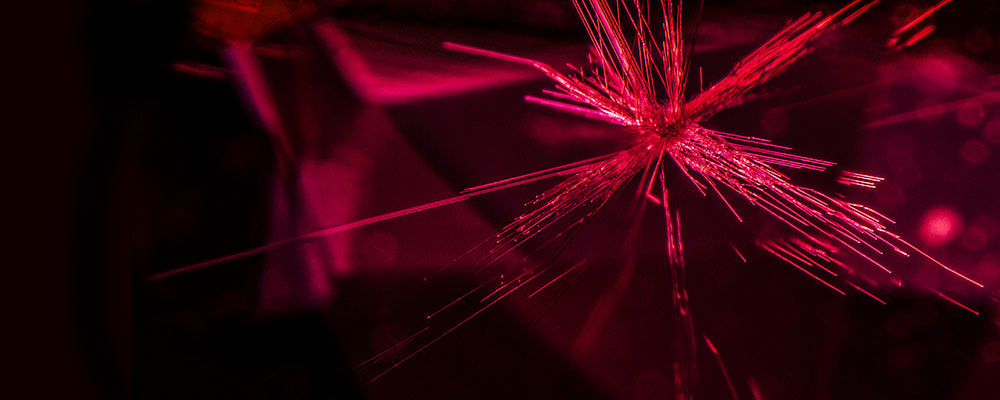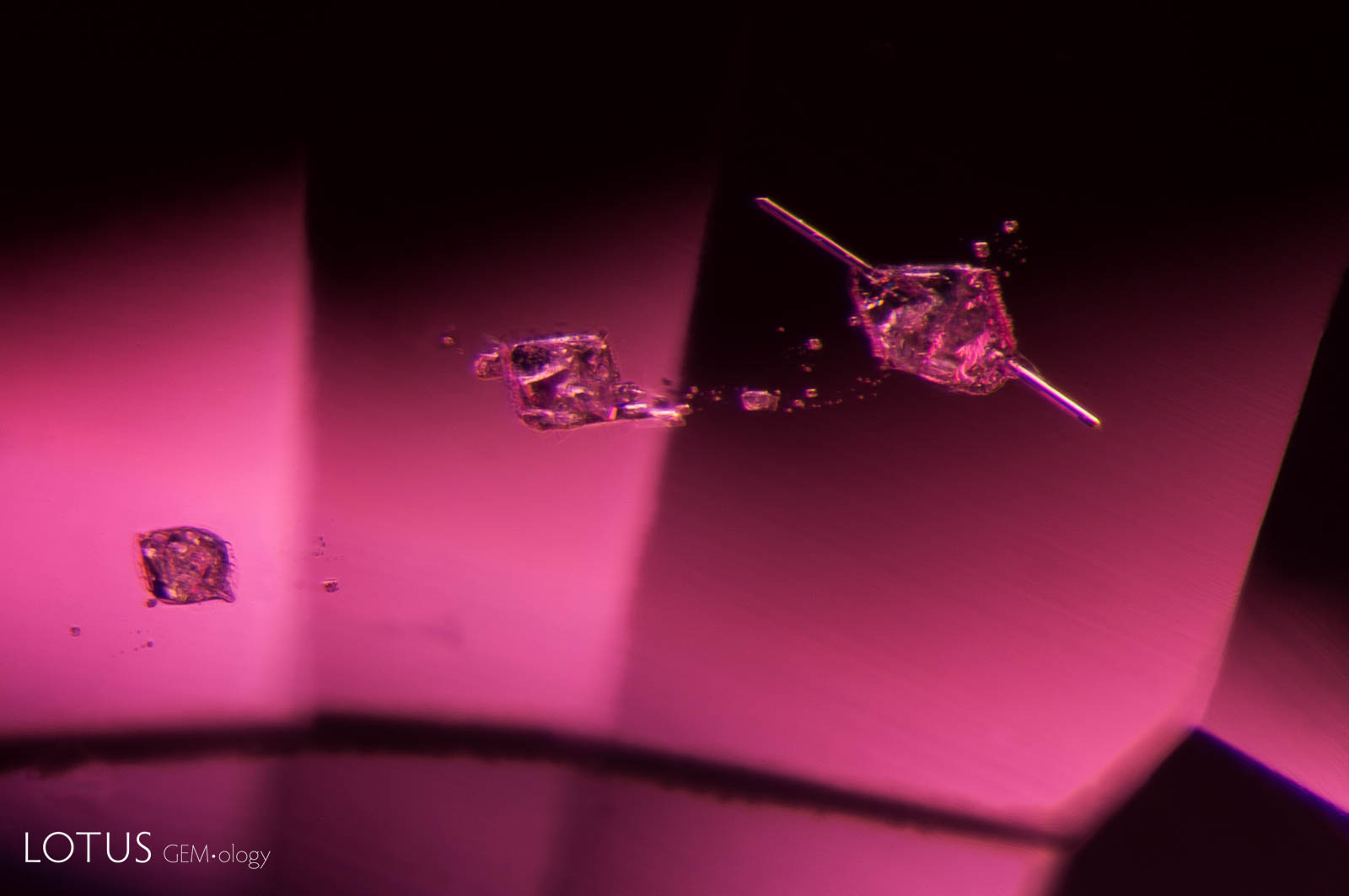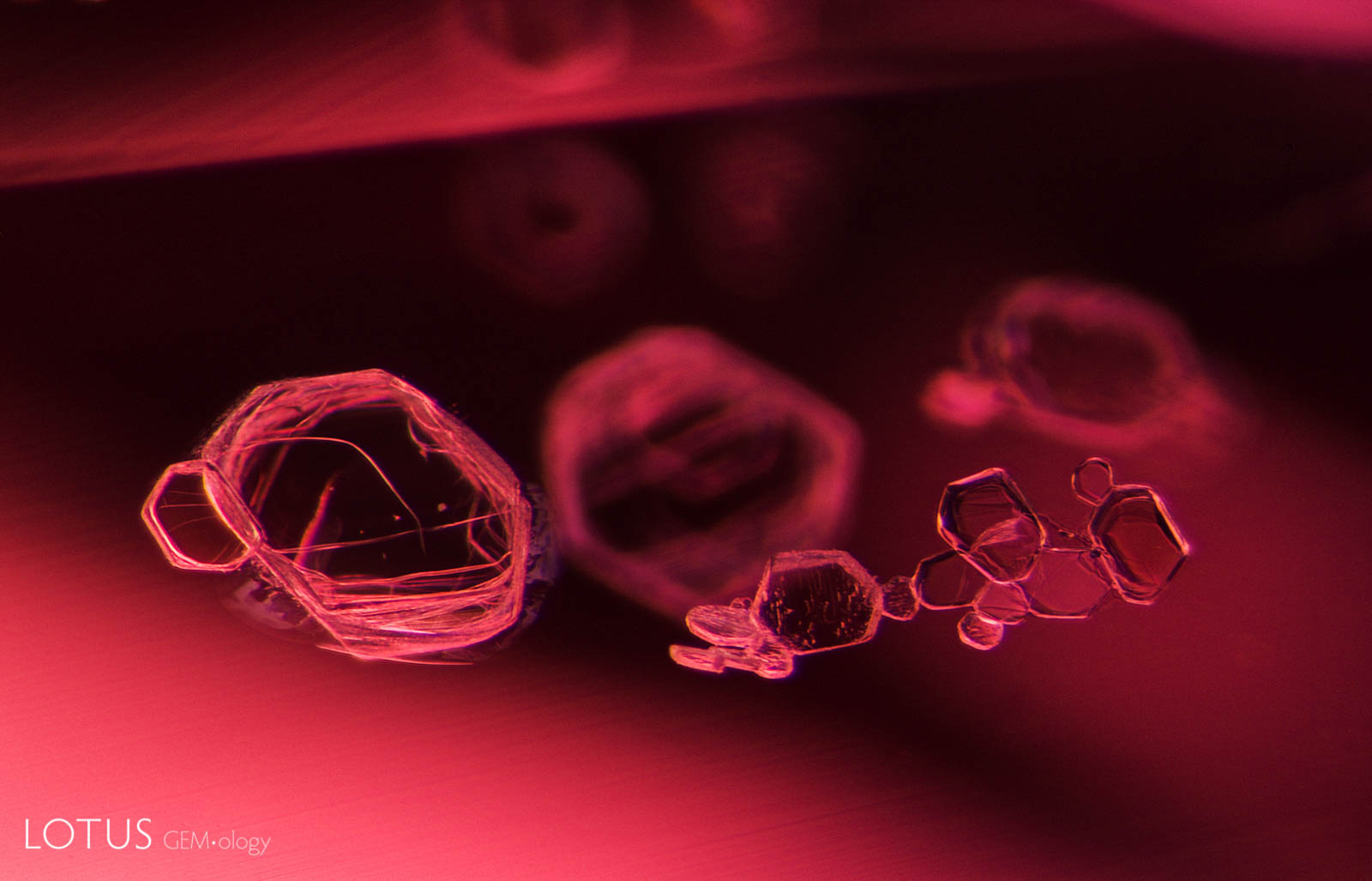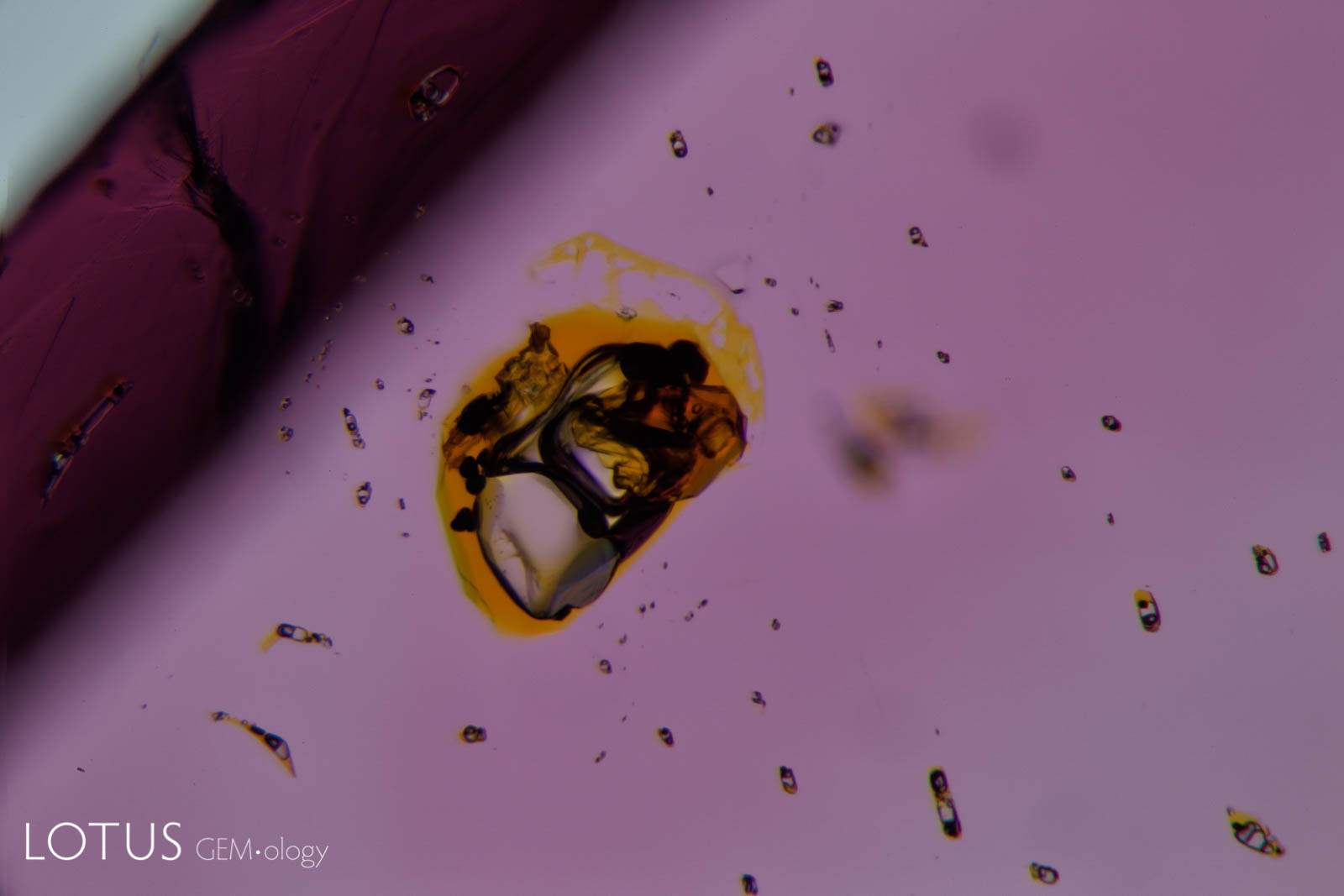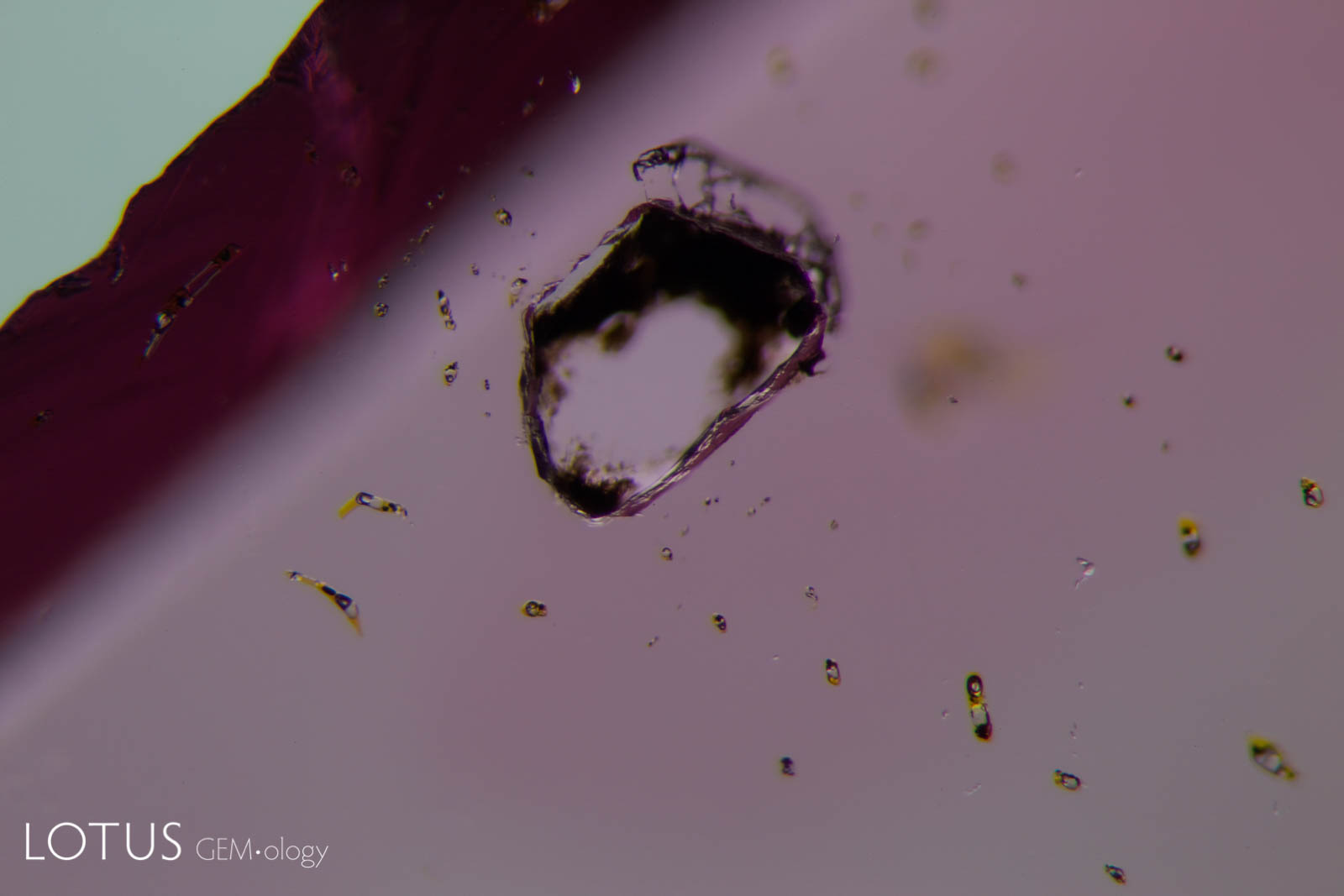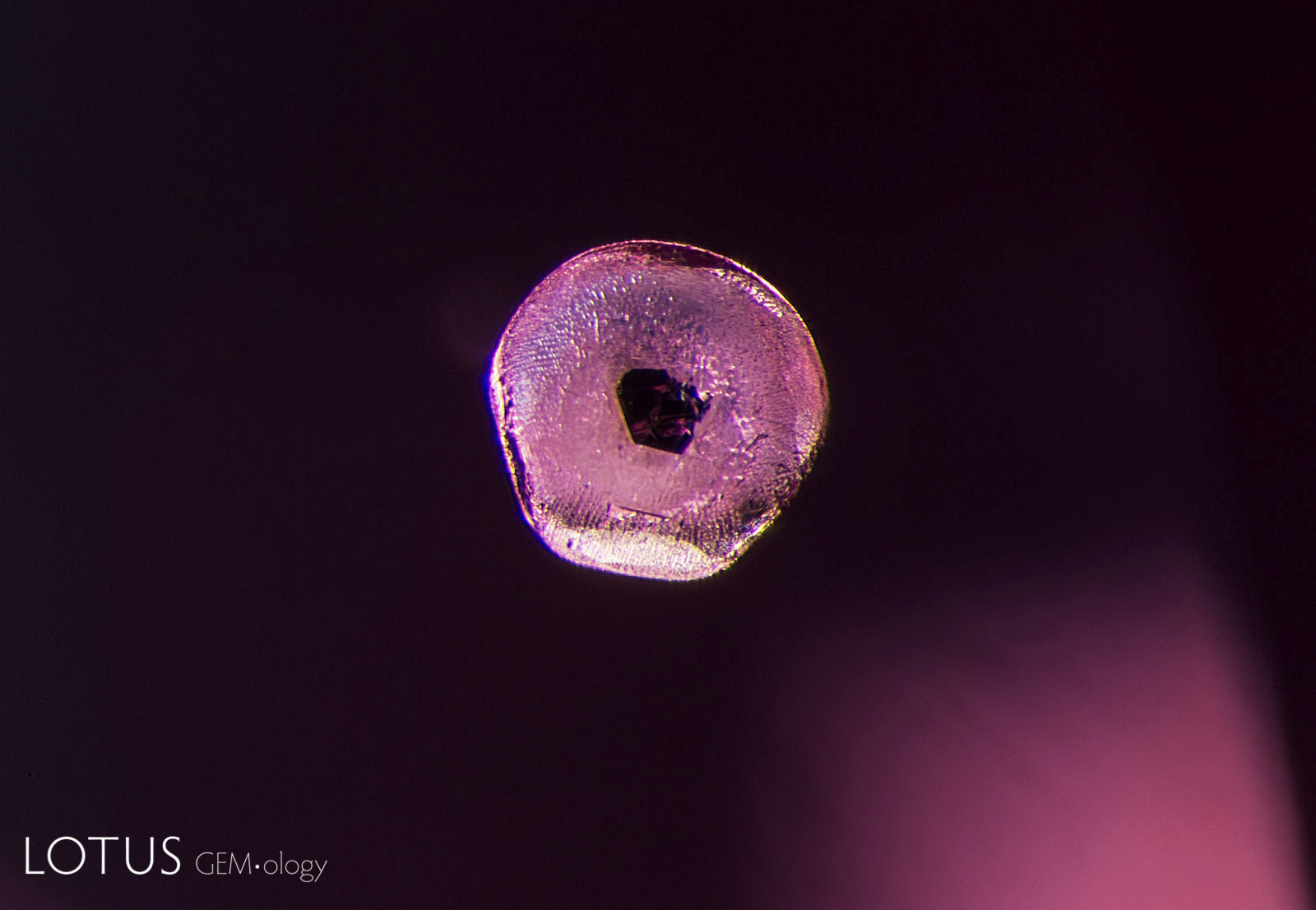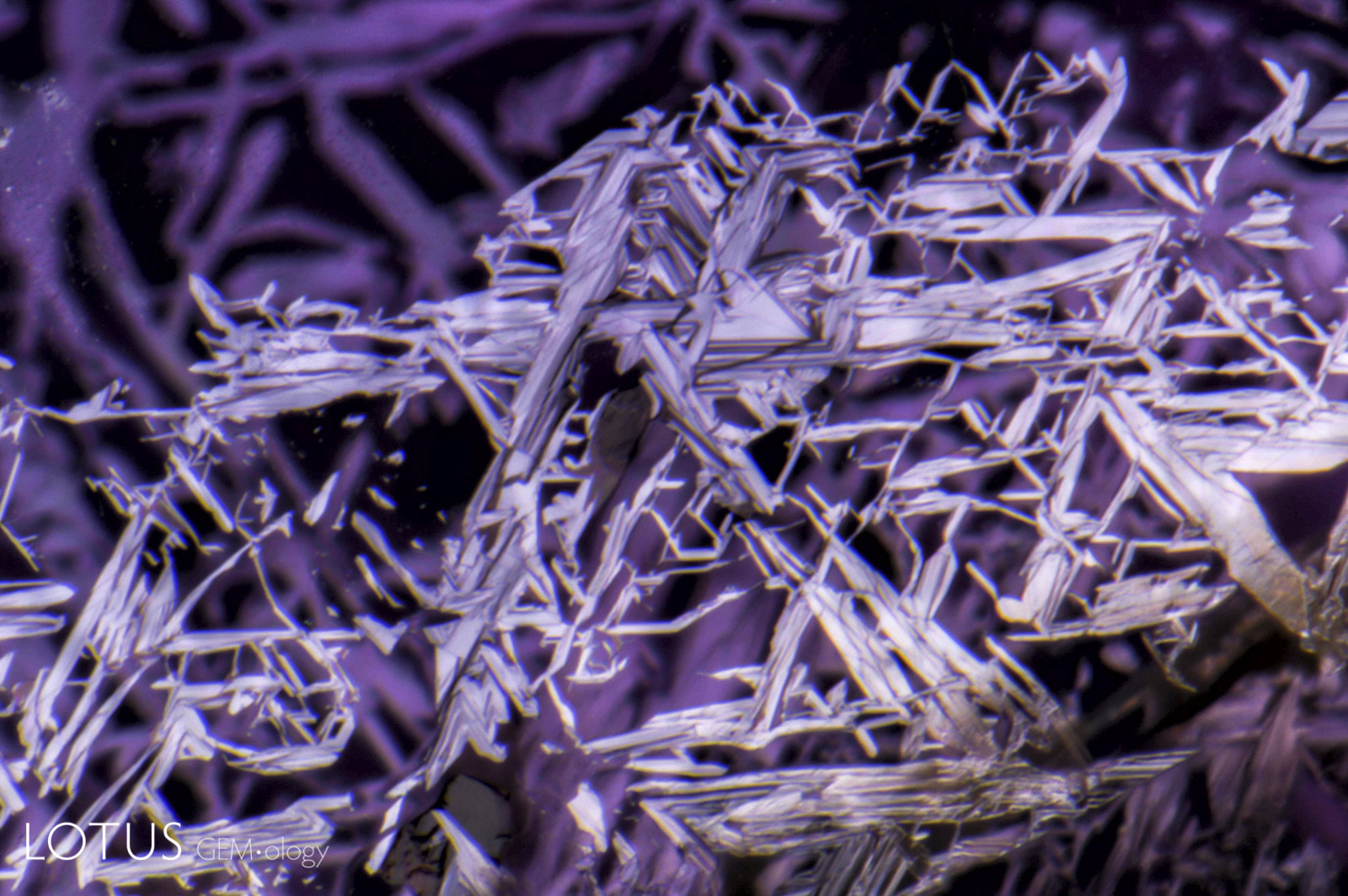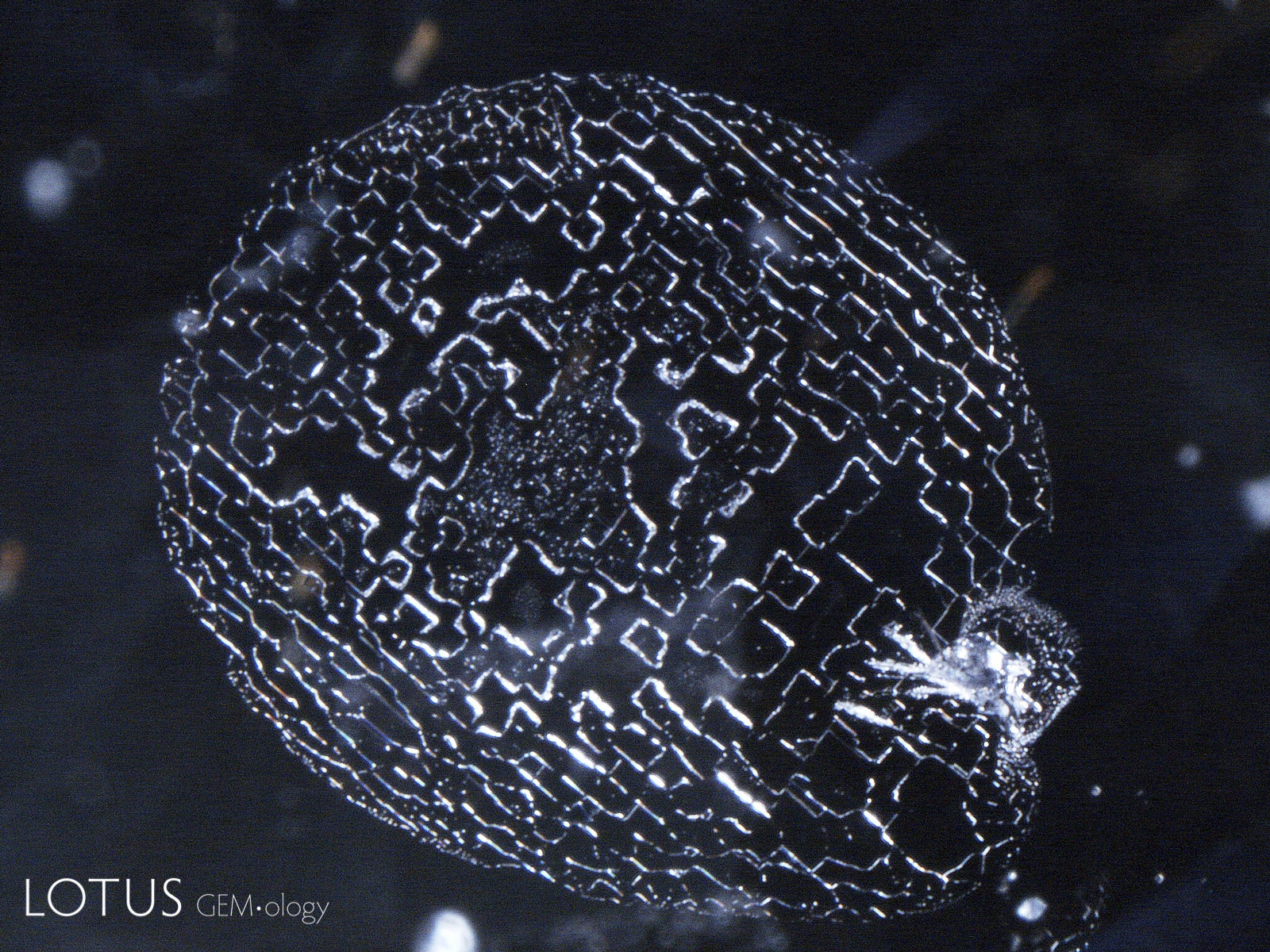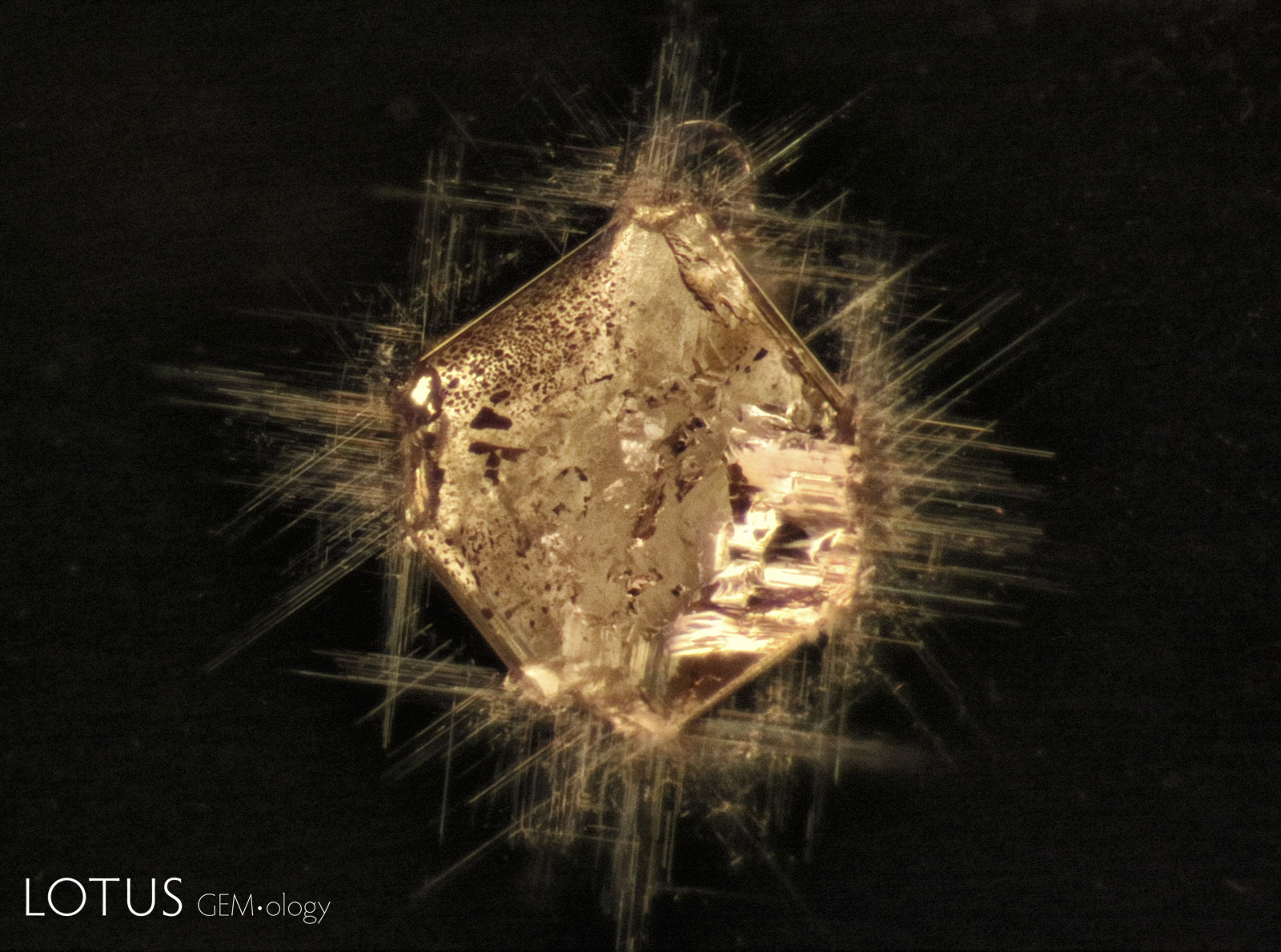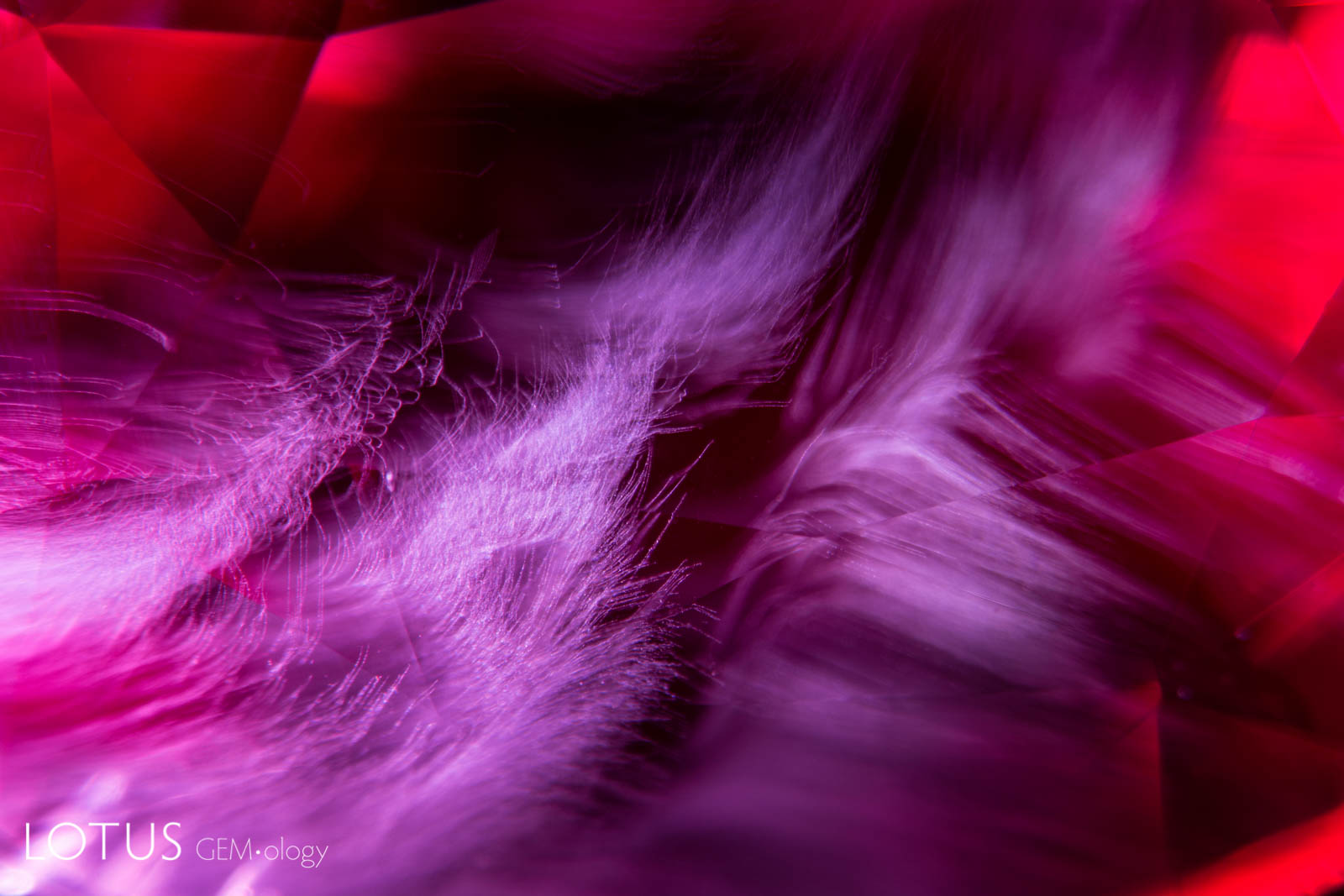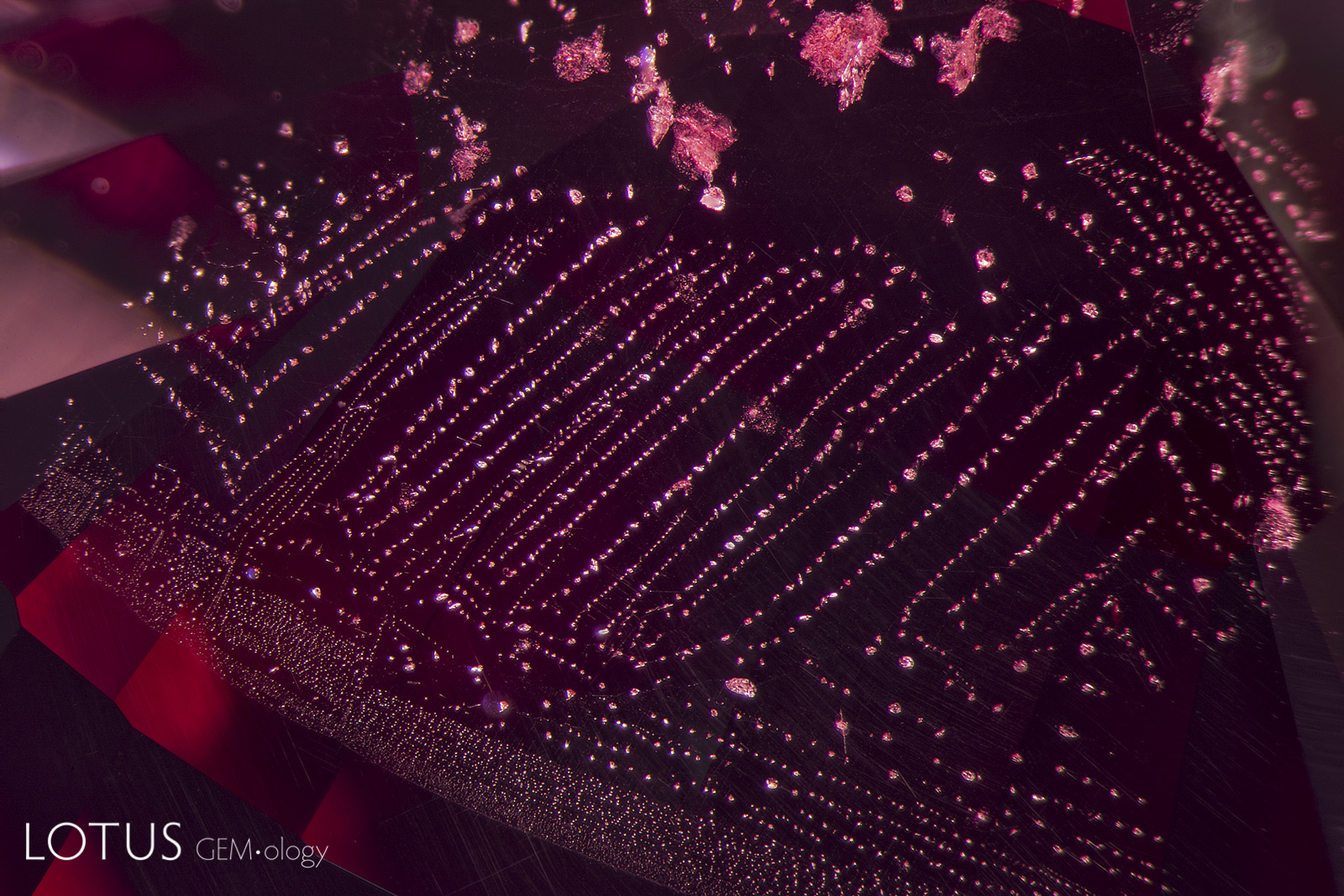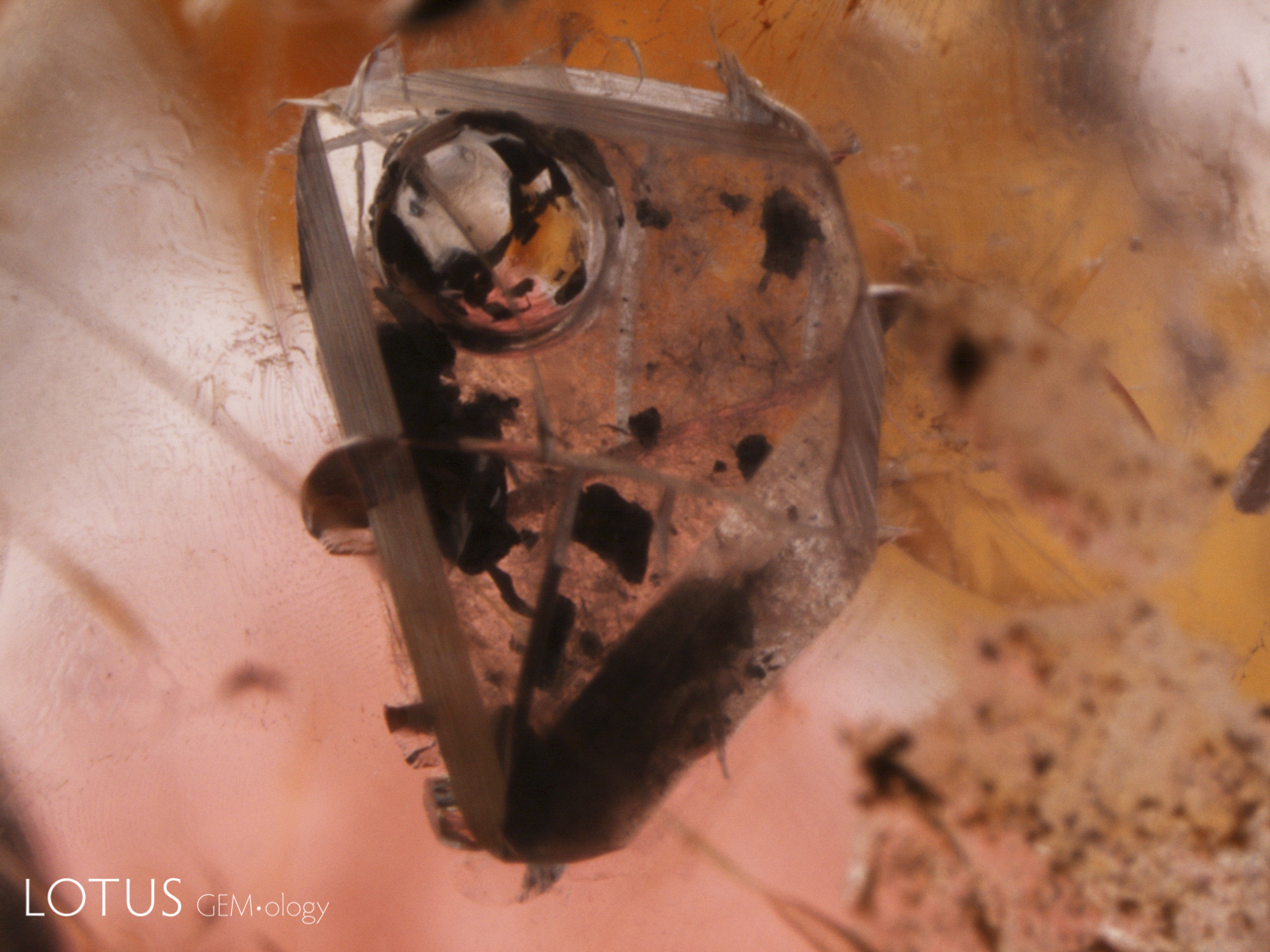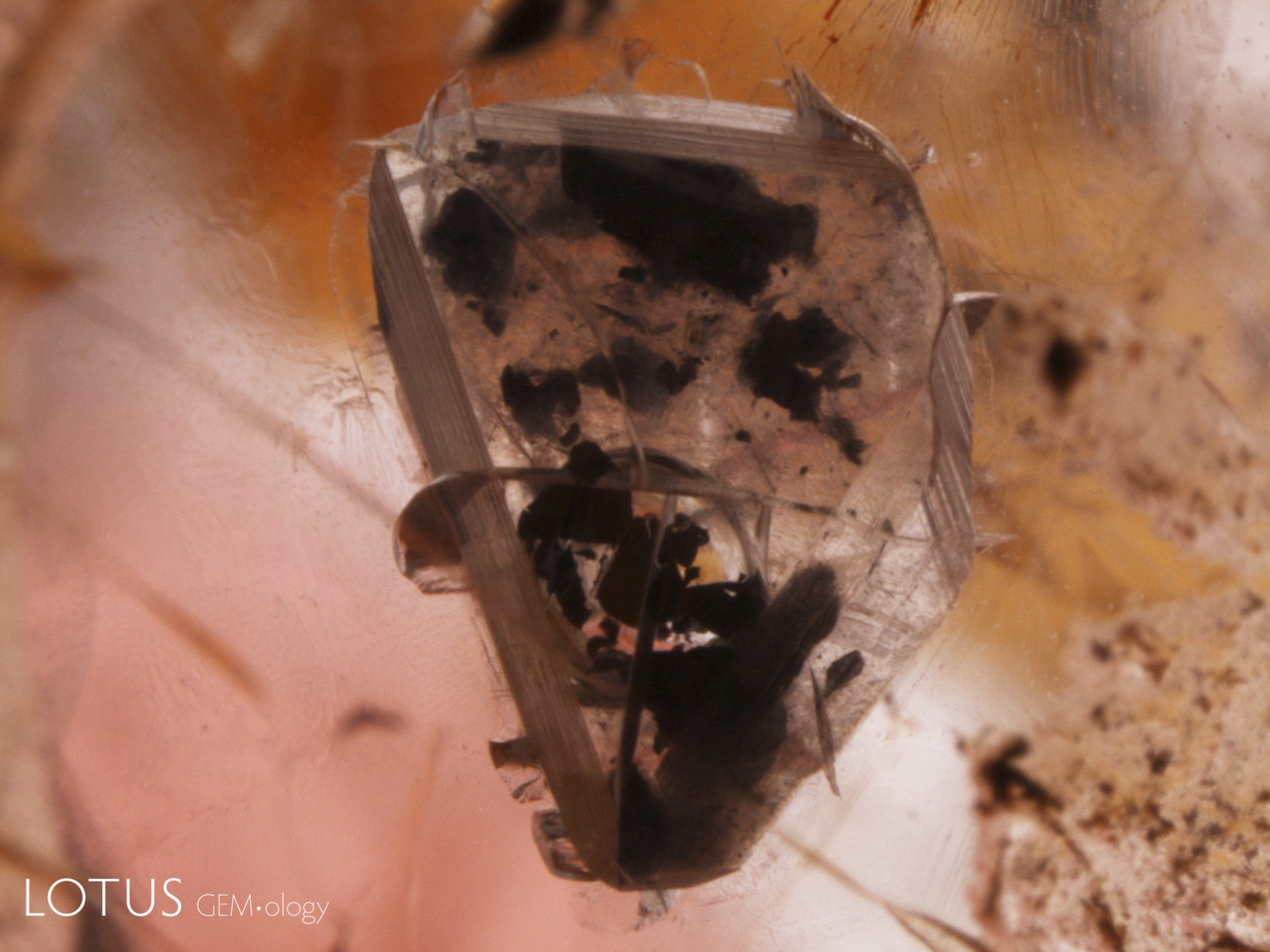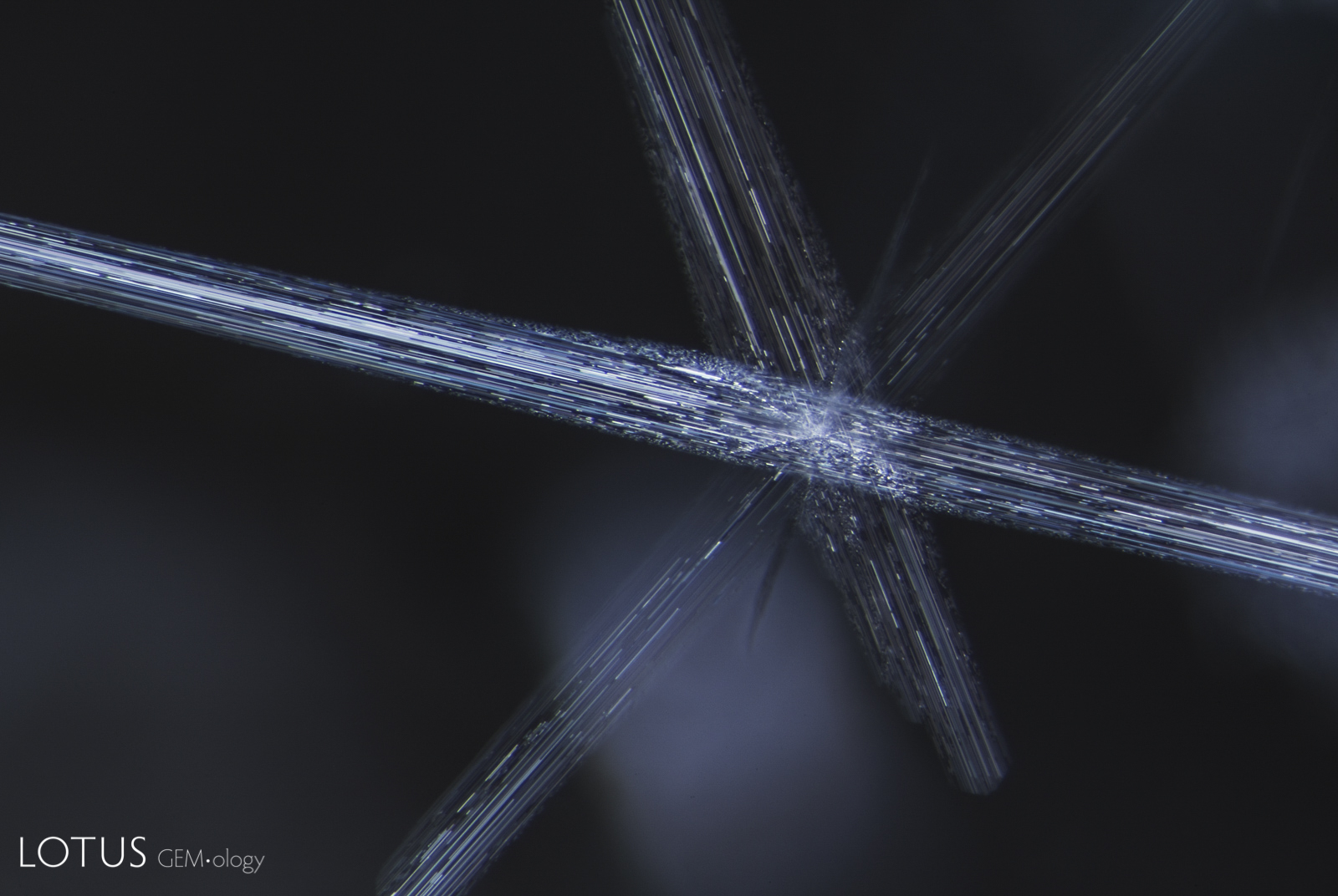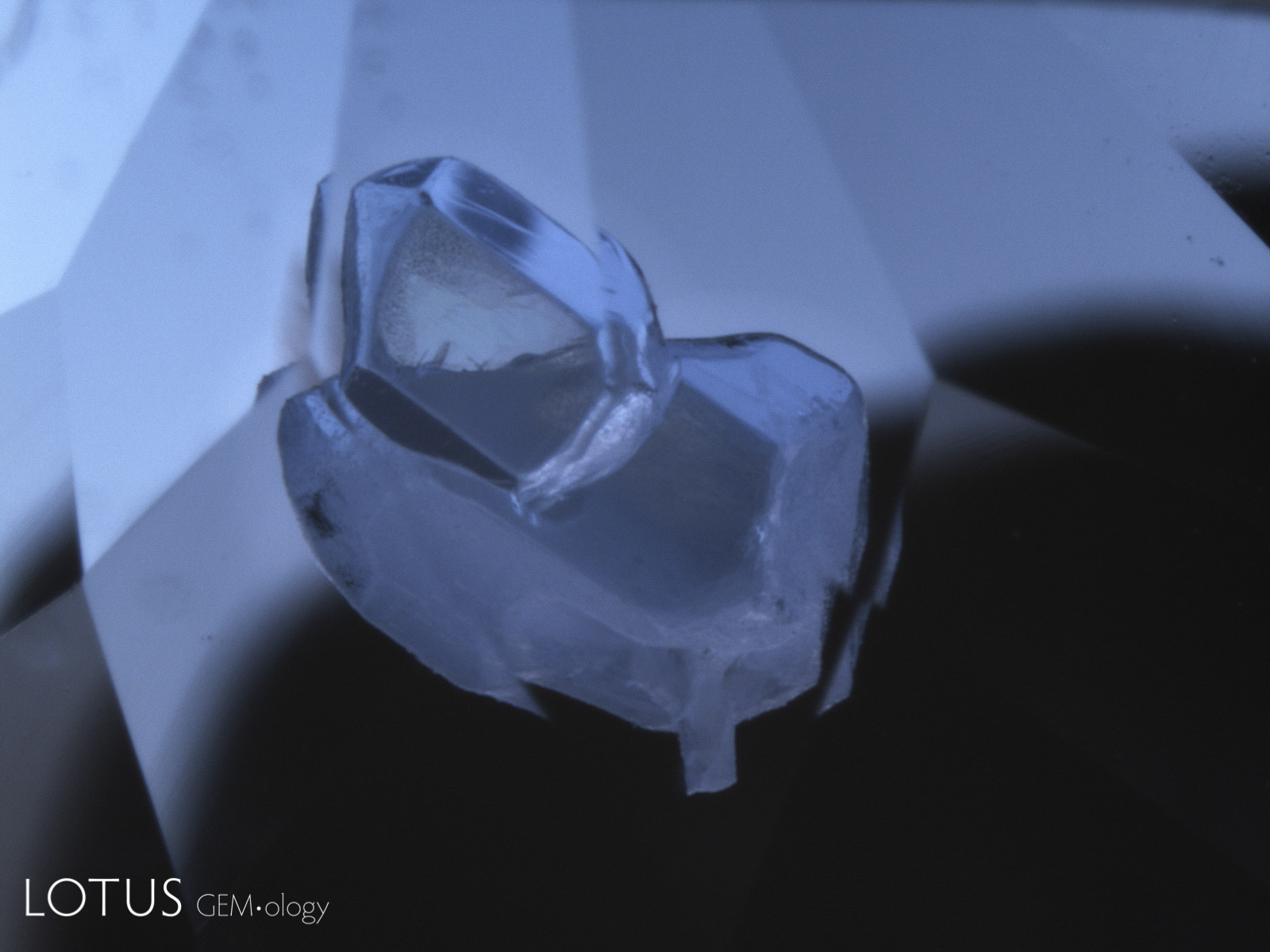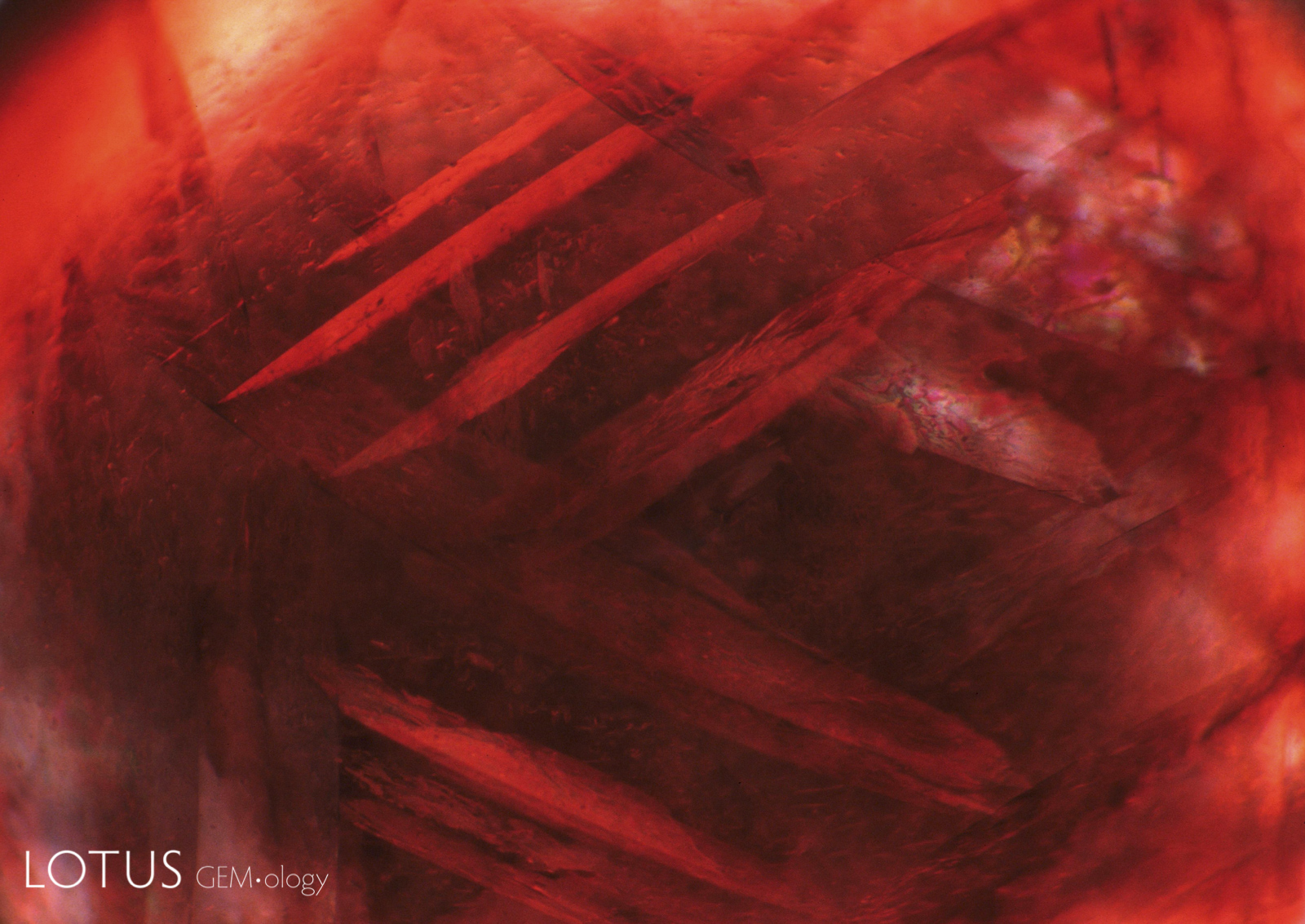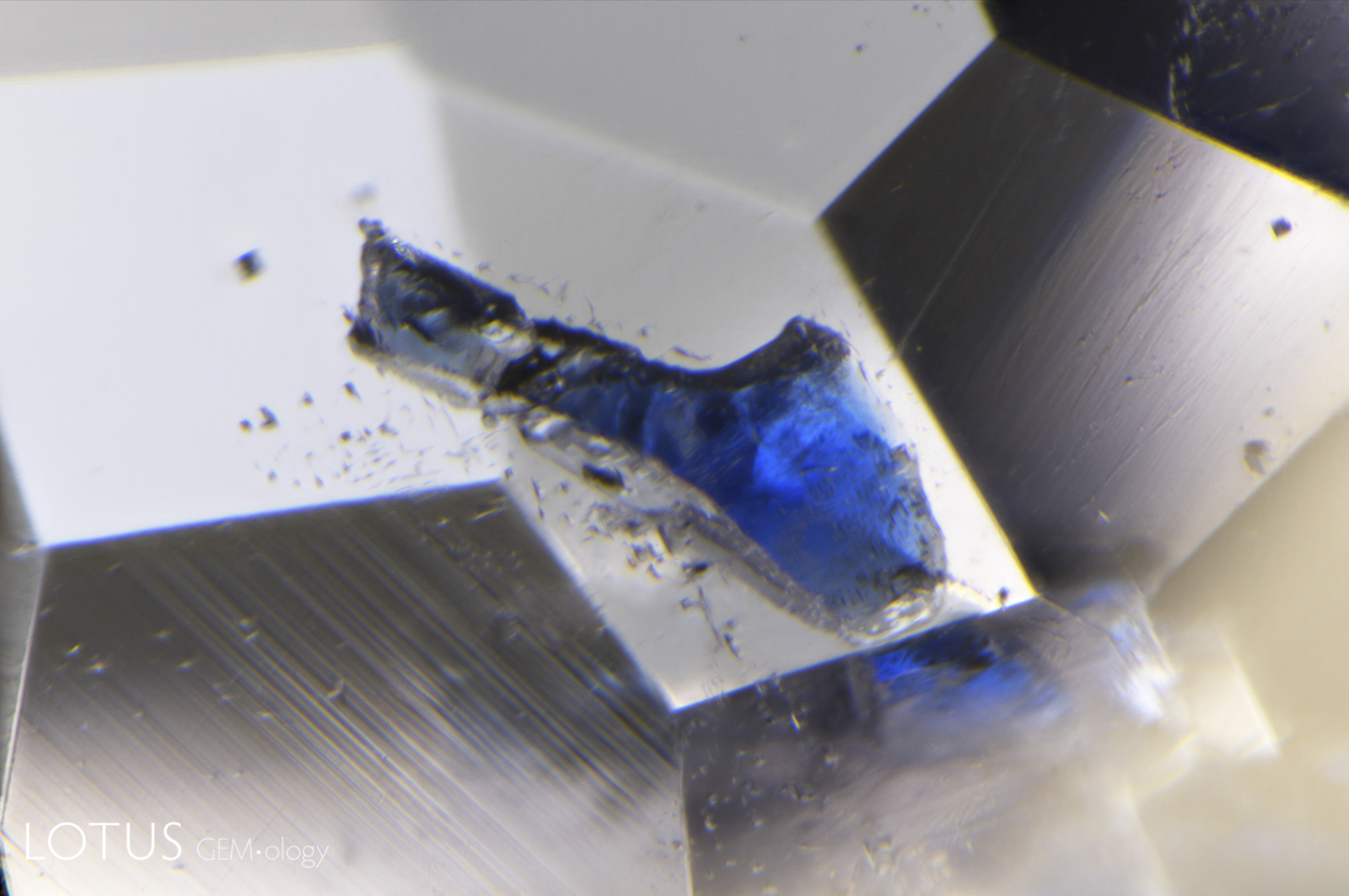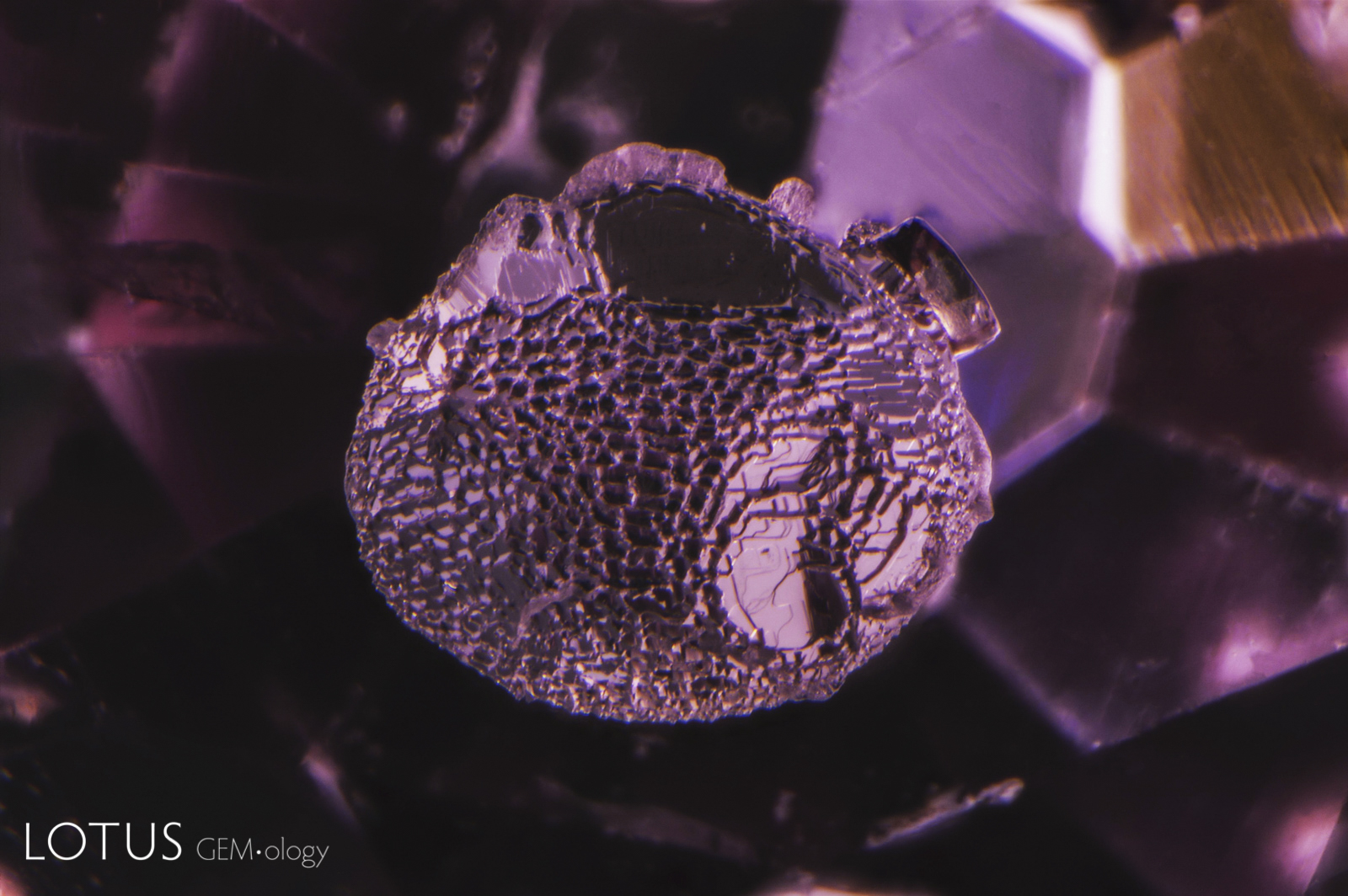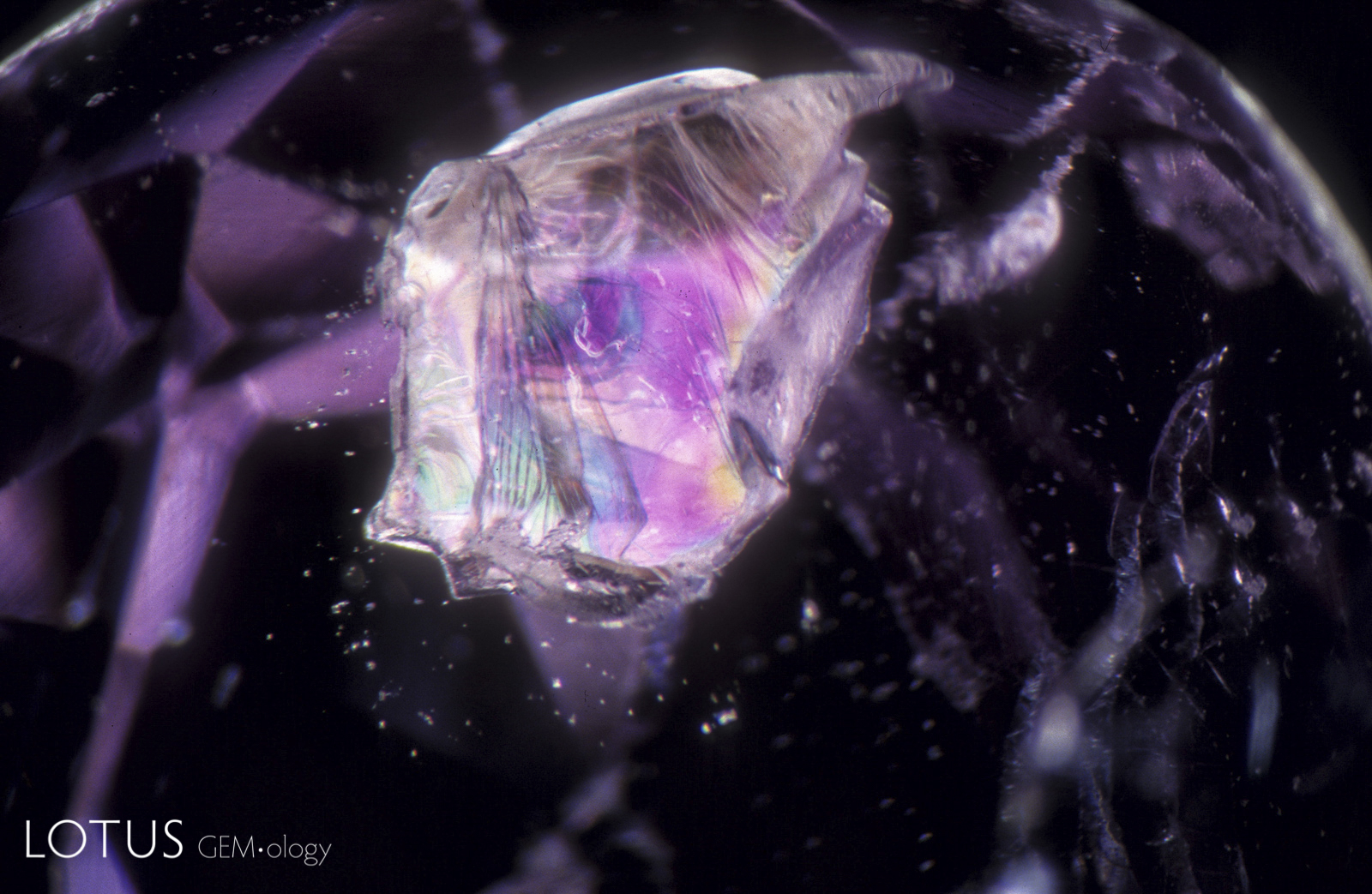To the jeweler, spinel is famous for its vivid colors. But for the gemologist, this gem is unlike any other. Its extreme hardness allows a fine polish. Couple this with single refraction, which eliminates the image blurring found in most other gems, and a varied landscape of inclusion subjects, and the result is an unparalleled canvas of delight for the photomicrographic artist.
Nothing is beautiful, only man: on this piece of naïveté rests all aesthetics, it is the first truth of aesthetics. Let us immediately add its second: nothing is ugly but degenerate man - the domain of aesthetic judgment is therewith defined.
Friedrich Nietzsche
aes·thet·ics
noun
Aesthetics, or esthetics (/ɛsˈθɛtɪks, iːs-, æs-/) is a branch of philosophy that deals with the nature of art, beauty and taste and with the creation or appreciation of beauty. In its more technical epistemological perspective, it is defined as the study of subjective and sensori-emotional values, or sometimes called judgments of sentiment and taste.
– Wikipedia
Introduction to spinel inclusions
The appreciation of gemstones is, at its heart, an exercise in aesthetic “subjective” judgment. Yet, both gem dealers and gemologists reach for “objective tools” (instruments) to describe these inherently subjective phenomena.
Gemologists employ ever-more complex instruments in an attempt to characterize the gifts of nature they are so blessed to handle. Virtually all of these deliver information in an entirely abstract fashion, with a series of numbers or graphs that have no relationship to the emotions people feel when gazing at a beautiful gem.
The one instrument that does not neuter the senses is the microscope. When one views a gemstone’s interior under magnification, the “read out” is replaced by a sense of awe and wonder. In a lifetime spent being assaulted by time control, where life is broken into ever smaller digital time bits, suddenly you plunge into a world of frozen time, one that affords vistas of millions or even billions of years. You witness the primordial forces that birthed our planet and, indeed, our entire universe. Entering this dimension is humbling; comparing the 5000 years of human “civilization” with the vastness of this “inner space” is a psyche-shattering experience.
In what follows, we will introduce readers to this magical realm, as found in the gem spinel. Like a frame around a painting, science is used where appropriate to enhance the subject, but it is our hope that this will only increase your enjoyment of these aesthetic masterpieces of Mother Nature.
|
Geology of Spinel Deposits The majority of gem spinel deposits around the world are of metamorphic origin, where spinel occurs associated with marble. These include:
In addition, there are alluvial gem spinel deposits where the nature of the original host rocks is unknown. These include:
Deposits in East Africa and Sri Lanka generally formed 730–550 million years ago, associated with the Pan-African orogeny, while those associated with the Himalayan orogenic event formed 5–25 million years ago (Giuliani & Fallick et al. (2017). Inclusion TypesPrimary cavitiesWhen gemology students are taught about spinel, one of the first things they are told to look for are octahedral crystals. These echo the external form of spinel crystals and look like little bipyramid shapes inside the spinel. Spinel fingerprints were first described by B.W. Anderson in 1942 (Anderson, 1947). In spinel, these negative crystals are typically filled with white (dolomite), yellow (phlogopite) or black (hercynite) matter. One of the authors (JIK) coined the term “philoxenism” to describe a host’s propensity to fill its cavities with a foreign mineral (Gübelin & Koivula, 2005). This certainly applies to spinel, for this crimson lady is the master dominatrix in this regard, forcing its external octahedral shape on a variety of guests. Secondary CavitiesIn contrast to their corundum cousins, while they are known, fluid inclusions are relatively rare in spinel. SolidsSpinel is host to a rich variety of solids. These can be placed into the following categories according to a scheme first developed by Gübelin (1973):
Secondary (Exsolved) SolidsSimilar to corundum, spinels sometimes contain exsolved rutile. In spinel, these form along the edges of octahedron faces. When present in enough quantity, star spinels can be cut. Other exsolved solids in spinel include titanite (sphene) and högbomite. |
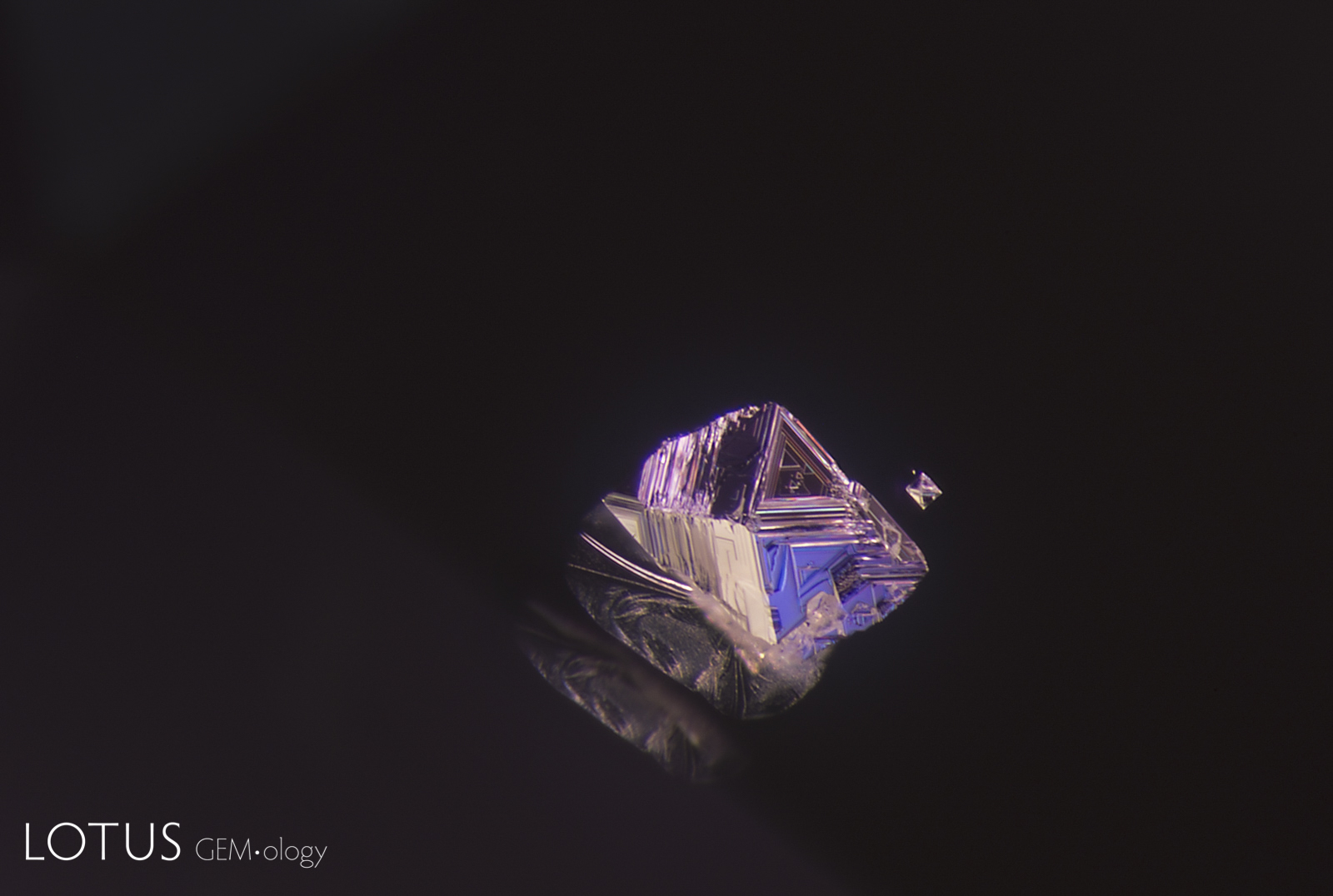 A spinel octahedron, frozen in time; Sri Lanka. Photo: E. Billie Hughes; click on the image for a larger photo
A spinel octahedron, frozen in time; Sri Lanka. Photo: E. Billie Hughes; click on the image for a larger photo
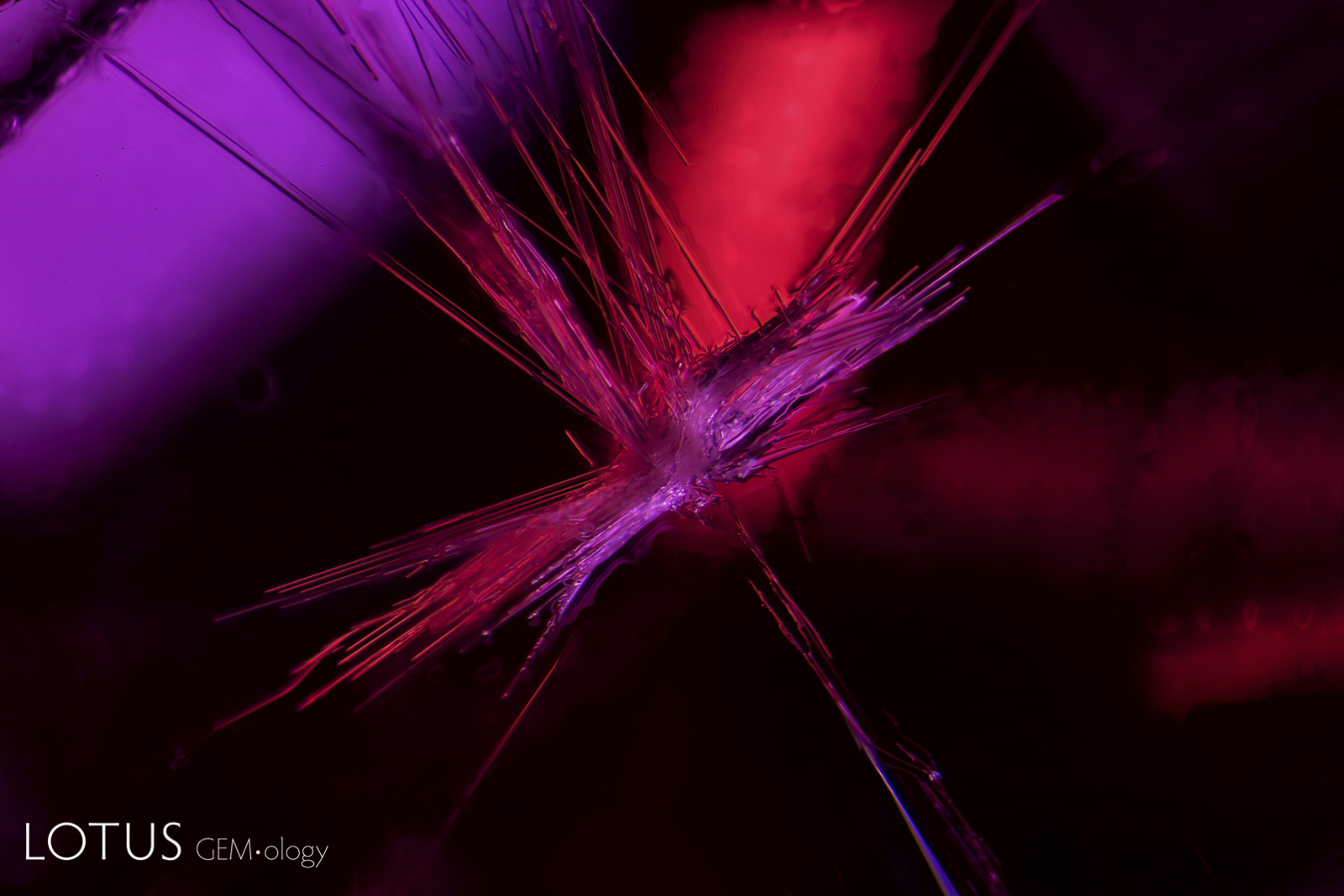 Radiating fibers create an otherworldly star burst in this Mogok spinel; Myanmar. Photo: Wimon Manorotkul; click on the image for a larger photo.
Radiating fibers create an otherworldly star burst in this Mogok spinel; Myanmar. Photo: Wimon Manorotkul; click on the image for a larger photo.
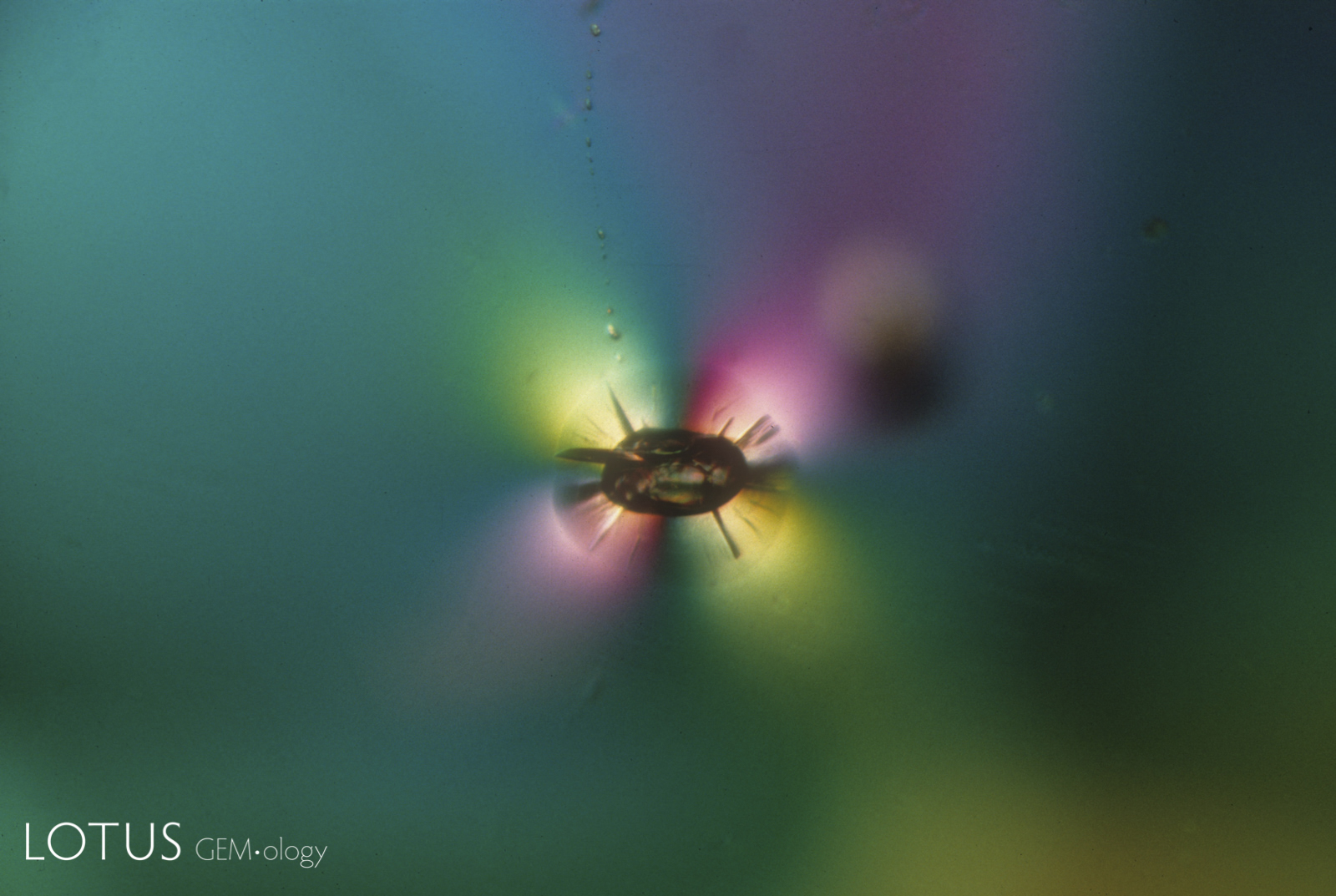 This rounded protogenetic zircon inclusion in a Sri Lankan spinel shows colorful strain in polarized light. Field of View: 2.1 mm. Photo: John I. Koivula; click on the image for a larger photo.
This rounded protogenetic zircon inclusion in a Sri Lankan spinel shows colorful strain in polarized light. Field of View: 2.1 mm. Photo: John I. Koivula; click on the image for a larger photo.
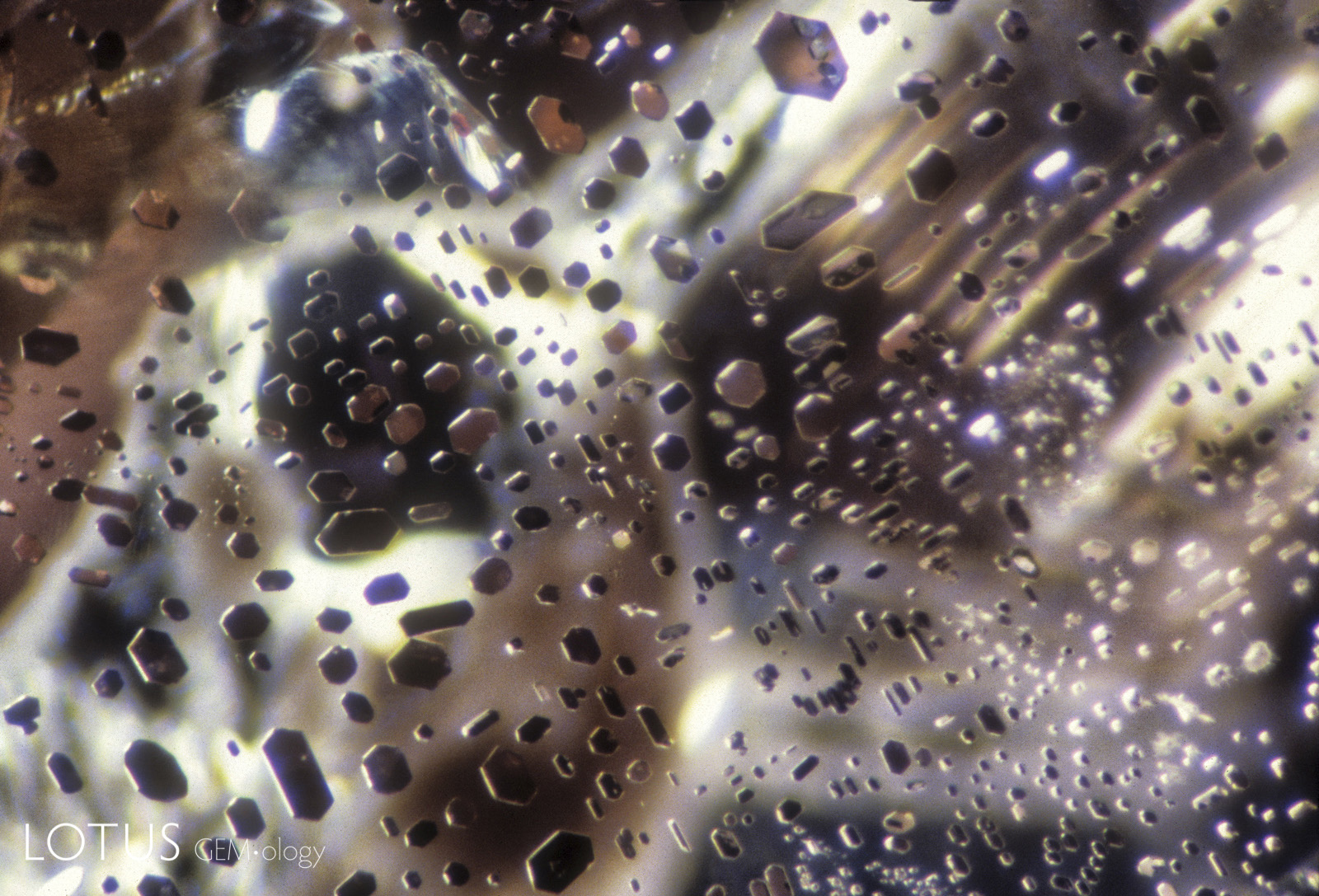 Mirror-smooth hexagonal graphite crystals decorate the interior of a light bluish gray spinel; Sri Lanka. Field of View: 2.1 mm. Photo: John I. Koivula; click on the image for a larger photo.
Mirror-smooth hexagonal graphite crystals decorate the interior of a light bluish gray spinel; Sri Lanka. Field of View: 2.1 mm. Photo: John I. Koivula; click on the image for a larger photo.
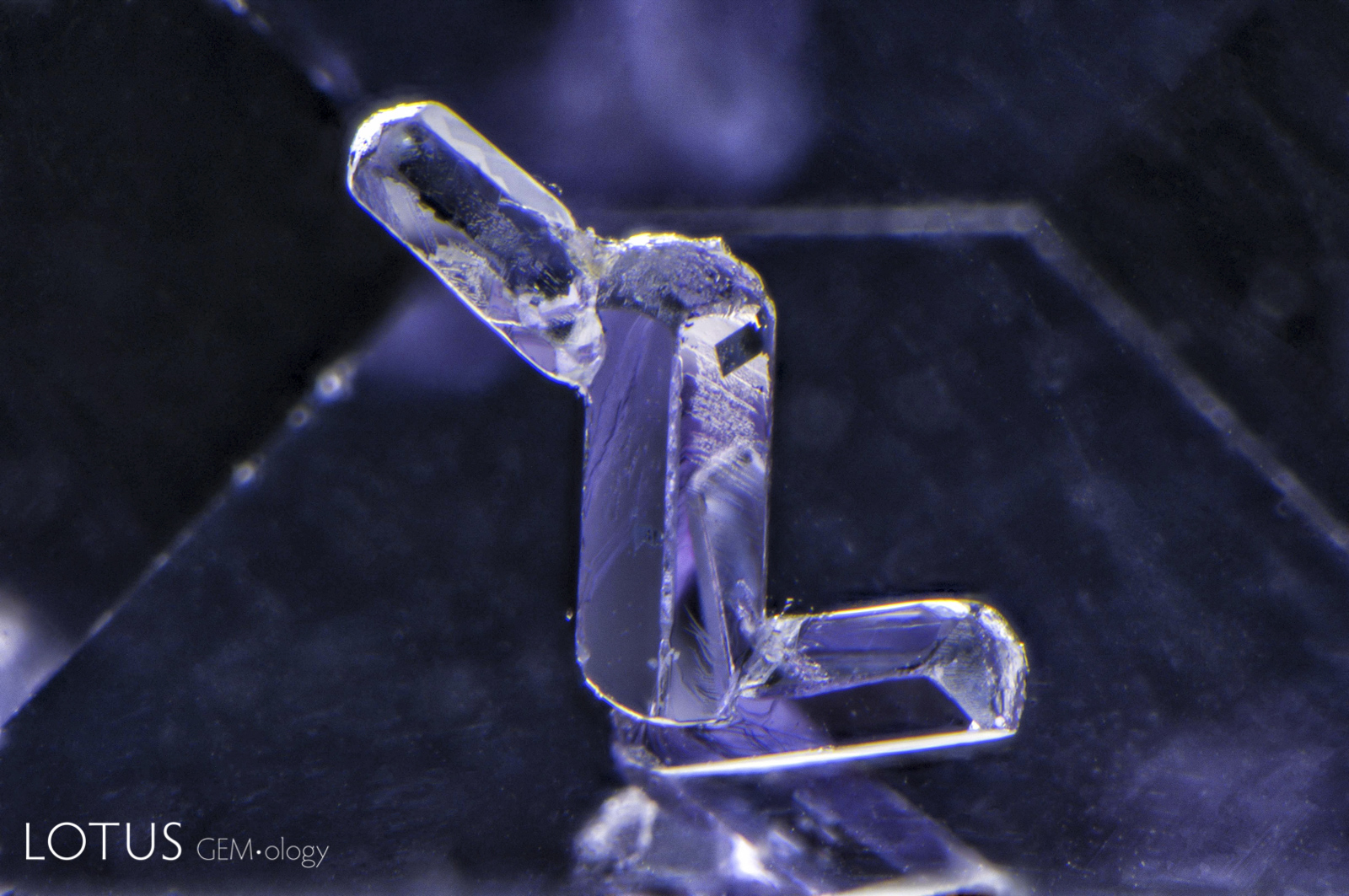 Syngenetic prisms of fluorapatite hitch a ride in a blue spinel from Sri Lanka. Photo: Nathan Renfro; click on the image for a larger photo.
Syngenetic prisms of fluorapatite hitch a ride in a blue spinel from Sri Lanka. Photo: Nathan Renfro; click on the image for a larger photo.
Table 1: Solids in Spinel
| Solid Inclusion Type | Spinel Origin | Earliest Reference |
Amphibole Group – Monoclinic or Orthorhombic
|
|
Gübelin, 1982 |
| Anatase – Tetragonal – TiO2 – Polymorph of Akaogiite, Brookite, Rutile, TiO2 II, UM1991-08-O:Ti |
|
Myint Myat Phyo & Bieler et al., 2019 |
| Anhydrite – Orthorhombic – CaSO4 |
|
Gübelin & Koivula, 1986 |
|
Apatite Group – Hexagonal
|
Apatite
Fluorapatite
|
Zwaan, 1965 |
|
Aragonite Group – Orthorhombic
|
|
Lomthong & Schwarz et al. (2019) |
|
Baddeleyite Group – Monoclinic
|
|
Gübelin, 1973 |
| Böhmite (Boehmite) – Orthorhombic – AlO(OH) – Dimorph of Diaspore |
|
Gübelin & Koivula, 1986 |
|
Brucite Group – Trigonal
|
|
Myint Myat Phyo & Bieler et al., 2019 |
|
Calcite Group – Hexagonal or Trigonal
|
Calcite
Magnesite
Rhodochrosite
|
Gübelin, 1969 |
|
Chlorite Group – Mostly monoclinic (also triclinic or orthorhombic) – A5-6T4Z18
|
Clinochlore
|
Kleismantas & Zoysa, et al., 2017 |
|
Diaspore Group – Orthorhombic |
Diaspore
|
Gübelin & Koivula, 2005 |
|
Dolomite Group – Trigonal |
Ankerite
|
Dolomite: Gübelin, 1969 Ankerite: Gübelin & Koivula, 2005 |
|
Epidote Supergroup – Monoclinic – {A12+A22+M13+M23+M33+}(Si2O7)(SiO4)O(OH) Allanite Group – Monoclinic
Epidote Group – Monoclinic – {A12+A22+M13+M23+M33+}(Si2O7)(SiO4)O(OH)
|
Allanite
Epidote
|
Allanite: Kleismantas & Zoysa, et al., 2017 Epidote: Gübelin & Koivula, 2005 |
Feldspar Group – Monoclinic or Triclinic
|
Orthoclase
Plagioclase Series (Albite to Anorthite)
|
Gübelin, 1973 |
Garnet Group – Isometric – X3Z2(SiO4)3
|
|
Gübelin, 1968 |
| Graphite – Hexagonal – C – Polymorph of Chaoite, Diamond, Lonsdaleite |
|
Gübelin & Koivula, 1986 |
|
Halite Group – Isometric
|
|
Myint Myat Phyo & Bieler et al., 2019 |
|
Corundum
Hematite
|
Koivula & Tannous, 2003 | |
| Högbomite – Hexagonal – (Mg,Fe)2(Al,Ti)5O10 |
|
Schmetzer & Berger, 1990 |
|
Humite Group – Orthorhombic or Monoclinic
|
Chondrodite
|
Chondrodite Clinohumite |
|
Ilmenite Group – Trigonal
|
Geikielite
|
Gübelin & Koivula, 2005 |
| Limonite – Unidentified massive hydroxides and oxides of iron – (Fe,O,OH,H2O) |
|
Gübelin & Koivula, 1986 |
|
Marcasite Group – Orthorhombic |
|
Myint Myat Phyo & Bieler et al., 2019 |
|
Mica Group – Monoclinic
|
Biotite
Fluorophlogopite
Muscovite
Paragonite
Mica
|
Gübelin, 1969 |
|
|
Myint Myat Phyo & Bieler et al., 2019 |
|
Olivine Group – Orthorhombic – Fe22+SiO4 to Mg2SiO4
|
|
Gübelin, 1973 |
|
Periclase Group – Isometric
|
|
Myint Myat Phyo & Bieler et al., 2019 |
|
Plumbogummite Group – Trigonal or Monoclinic
|
|
Kleismantas & Zoysa et al., 2017 |
|
Pyrite Group – Isometric |
|
Gübelin & Koivula, 2005 |
| Pyroxene Group – Orthorhombic or Monoclinic – ABSi2O6 |
Diopside
Enstatite
Pyroxene
|
Schmetzer & Gübelin et al., 2000 |
|
Pyrrhotite Group – Hexagonal, Monoclinic or Triclinic
|
|
Gübelin & Koivula, 2005 |
| Quartz – Trigonal – SiO2 – Polymorph of Coesite, Cristobalite, Keatite, Mogánite, Seifertite, Stishovite, Tridymite |
|
Gübelin & Koivula, 1986 |
|
Rutile Group – Tetragonal |
|
Eppler, 1958 |
| Sillimanite – Orthorhombic – Al2(SiO4)O5 – Polymorph of Andalusite, Kyanite |
|
Schmetzer, 1988 |
|
Sodalite Group – Isometric or Orthorhombic
|
|
Renfro & Koivula, 2019 |
| Spinel Group – Isometric |
Hercynite
Spinel (including Ceylonite/Pleonaste), Gahnite, Magnesite (Gübelin & Koivula, 2005)
|
Gübelin, 1957 |
|
Sulfur (Sulphur) Group – Orthorhombic or Monoclinic
|
|
Gübelin & Koivula, 2005; Pardieu, 2014 |
|
Titanite Group – Monoclinic or Triclinic
|
|
Gübelin, 1957 |
|
Uraninite Group – Isometric
|
|
Gübelin & Koivula, 1986 |
|
Zircon Group – Tetragonal
|
|
Gübelin, 1950 |
| Zoisite – Orthorhombic – Ca2Al3[Si2O7][SiO4]O(OH) – Dimorph of Clinozoisite |
|
Kleismantas & Zoysa et al., 2017 |
|
Unconfirmed
|
Summary of spinel inclusions
As any good artist knows, it is a fallacy to think that two people of normal eyesight gazing at a given object are necessarily seeing the same thing. It is the interpretation of the image that enables the artist to see a significant and exciting pattern of shapes, shadows and colours, where his friend may see nothing of any interest whatsoever.
B.W. Anderson, 1966, "Gemmology on a Shoestring"
To the jeweler, spinel is famous for its vivid colors. But for the gemologist, this gem is unlike any other. Its extreme hardness allows a fine polish. Couple this with single refraction, which eliminates image blurring, and a varied landscape of inclusion subjects, and the result is an unparalleled canvas of delight for the photomicrographic artist.

References & further reading
- Anderson, B.W. (1942) Gem Testing For Jewellers. London, Heywood & Co. Ltd., see p. 152, Fig. 37.; RWHL*.
- Anderson, B.W. (1966) Gemmology on a shoestring. Journal of Gemmology, Vol. 10, No. 3, July, pp. 69–83; RWHL*.
- Bank, H., Henn, U. et al. (1989) Spinelle aus dem Umba-Tal, Tanzania. Zeitschrift der Deutschen Gemmologischen Gesellschaft, Vol. 38, pp. 166–168; RWHL.
- Boehm, E.W. (2013) A comparative overview of inclusions in spinel. International Gemmological Conference, Hanoi, Vietnam, p. 88; RWHL.
- Boehm, E.W. (2016) Gem Notes: Pink spinel from Mozambique. Journal of Gemmology, Vol. 36, No. 2, pp. 109–111; RWHL.
- Boehm, E.W. (2017) Gem Notes: Purple spinels from Badakhshan, Afghanistan. Journal of Gemmology, Vol. 35, No. 8, October, pp. 694–697; RWHL.
- Borenstein, G. and Sevdermish, M. (2018) Gem Notes: Blue-to-violet spinels from Mozambique. Journal of Gemmology, Vol. 36, No. 2, pp. 104–106; RWHL.
- Choudhary, G. (2009) Gem News International: Interesting natural and synthetic spinels. Gems & Gemology, Vol. 45, No. 1, Spring, pp. 68–70; RWHL.
- Choudhary, G. and Golecha, C. (2007) A study of nail-head spicule inclusions in natural gemstones. Gems & Gemology, Vol. 43, No. 3, Fall, pp. 228–235; RWHL.
- Cooper, A. and Sun, Z. (2014) Lab Notes: Spinel inclusion in spinel. Gems & Gemology, Vol. 50, No. 4, Winter, pp. 297–299; RWHL.
- Crowningshield, R. (1982) Lab Notes: Spinel inclusions. Gems & Gemology, Vol. 18, No. 2, p. 107; RWHL.
- Eppler, W.F. (1958) Notes on asterism in corundum, rose quartz and almandine garnet and chatoyancy in beryl. Journal of Gemmology, Vol. 6, No. 5, January, pp. 195–212; RWHL.
- Eppler, W.F. (1958) Notes on asterism in spinel and chatoyancy in chrysoberyl, quartz, tourmaline, zircon and scapolite. Journal of Gemmology, Vol. 6, No. 6, April, pp. 251–263; RWHL*.
- Gübelin, E.J. (1950) The diagnostic importance of inclusions in gemstones. Journal of Gemmology, Vol. 2, No. 7, July, pp. 281–303; RWHL*.
- Gübelin, E.J. (1953) Inclusions as a Means of Gemstone Identification. Los Angeles, GIA, 220 pp.; RWHL*.
- Gübelin, E.J. (1957) A contribution to the genealogy of inclusions. Journal of Gemmology, Vol. 6, No. 1, January, pp. 1–47; RWHL*.
- Gübelin, E.J. (1968) Die Edelsteine der Insel Ceylon. Lucerne, privately published, 152 pp.; RWHL*.
- Gübelin, E.J. (1969) On the nature of mineral inclusions in gemstones. Journal of Gemmology, Vol. 11, No. 5, Jan., pp. 149–192; RWHL*.
- Gübelin, E.J. (1973) Internal World of Gemstones. Zürich, ABC Verlag, reprinted 1983, 234 pp.; RWHL*.
- Gübelin, E.J. (1982) Gemstones of Pakistan: Emerald, ruby and spinel. Gems & Gemology, Vol. 18, No. 3, Fall, pp. 123–129; RWHL*.
- Gübelin, E.J. and Koivula, J.I. (1986) Photoatlas of Inclusions in Gemstones. Zurich, Switzerland, ABC Edition, 532 pp.; RWHL*.
- Gübelin, E.J. and Koivula, J.I. (2005) Photoatlas of Inclusions in Gemstones, Volume 2. Basel, Switzerland, Opinio Publishers, 830 pp., RWHL*.
- Gunawardene, M. and Rupasinghe, M.S. (1986) The Elahera gem field in central Sri Lanka. Gems & Gemology, Vol. 22, No. 2, Summer, pp. 80–95; RWHL.
- Huong, L.T.-T., Häger, T. et al. (2012) Gemstones from Vietnam: An update. Gems & Gemology, Vol. 48, No. 3, Fall, pp. 158–176; RWHL*.
- Hughes, E.B. (2018) G&G Micro-World: Star spinel with four and six rays. Gems & Gemology, Vol. 54, No. 2, Summer, p. 230; RWHL.
- Hughes, E.B. (2020) G&G Micro-World: Actinolite in spinel. Gems & Gemology, Vol. 56, No. 1, Spring, p. 136; RWHL.
- Johnson, M.L. (1995) Lab Notes: Spinel, natural with a dendritic inclusion. Gems & Gemology, Vol. 31, No. 1, Spring, p. 58; RWHL.
- Johnson, M.L. (1995) Lab Notes: Spinel, with högbomite(?) inclusions. Gems & Gemology, Vol. 31, No. 4, Winter, p. 272; RWHL.
- Kane, R.E. (1990) Lab Notes: Spinel from Tanzania. Gems & Gemology, Vol. 26, No. 2, Summer, pp. 156–157; RWHL.
- Koivula, J.I. and Kammerling, R.C. (1989) Examination of a gem spinel crystal from the Pamir Mountains. Zeitschrift der Deutschen Gemmologischen Gesellschaft, Vol. 38, No. 2/3, pp. 85–88; RWHL.
- Koivula, J.I., Kammerling, R.C. and Fritsch, E. (1993) Gem News: Spinel from Vietnam. Gems & Gemology, Vol. 29, No. 3, Fall, pp. 213–214; RWHL.
- Koivula, J.I. and Tannous, M. (2003) Lab Notes: Unusual “red” spinel. Gems & Gemology, Vol. 39, No. 2, Summer, p. 150; RWHL.
- Kleismantas, A., Zoysa, G.E. et al. (2017) Chemistry and gemological features of spinels from Sri Lanka and Vietnam. 35th International Gemmological Conference Proceedings, 8–19 October, Windhoek, Namibia, pp. 148–150; RWHL.
- Kumaratilake, W.L.D.R.A. (1998) Spinel and garnet star networks: An interesting asterism in gems from Sri Lanka. Journal of Gemmology, Vol. 26, No. 1, January, pp. 24–28; RWHL.
- Lomthong, P., Schwarz, D. et al. (2019) Spinels from Sri Lanka. InColor, No. 43, Summer, pp. 40–52, RWHL*.
- Malsy, A.-K. and Klemm, L. (2010) Distinction of gem spinels from the Himalayan mountain belt. CHIMIA, Vol. 64, No. 10, pp. 741–746; RWHL.
- Malsy, A.-K., Karampelas, S. et al. (2012) Orangey-red to orangey-pink gem spinels from a new deposit at Lang Chap (Tan Huong-Truc Lau), Vietnam. Journal of Gemmology, Vol. 33, Nos. 1–4, pp. 19–28; RWHL.
- Milisenda, C., Henn, U. et al. (2001) New gemstone occurrences in the south-west of Madagascar. Journal of Gemmology, Vol. 27, No. 7, July, pp. 385–394; RWHL*.
- Myint Myat Phyo, Bieler, E. et al. (2019) Spinel from Mogok, Myanmar—A detailed inclusion study by Raman microspectroscopy and scanning gemselectron microscopy. Journal of Gemmology, Vol. 36, No. 5, pp. 418–435; RWHL*.
- Panjikar, J. and Panjikar, A. (2017) Study and investigation of spinel from Kermunda in Odisha, India. International Gemmological Conference, International Gemmological Conference, Windhoek, Namibia, 8–19 October, pp. 62–66; RWHL.
- Pardieu, V. (2014) Hunting for "Jedi" spinels in Mogok. Gems & Gemology, Vol. 50, No. 1, Spring, pp. 46–57; RWHL.
- Pardieu, V., Sangsawong, S., Vertiest, W., & Raynaud, V. (2016) Gem News International: ‘‘Star of David’’ spinel twin crystal with multiphase inclusions from Mogok. Gems & Gemology Vol. 52, No. 1, Spring, pp. 100–101; RWHL.
- Peretti, A., Mullis, J. et al. (2018) Spinel formation by sulphur-rich saline brines from Mansin (Mogok area, Myanmar). https://gemresearch.ch/spinel-formation-mansin, accessed 2 June 2019, pp. 149–150, RWHL.
- Quinn, E.P. and Koivula, J.I. (2004) Lab Notes: Spinel with interesting etch tubes. Gems & Gemology, Vol. 40, No. 2, Summer, p. 168; RWHL.
- Raynaud, V. and Vertriest, W. (2016) G&G MicroWorld: Etch marks, negative crystals, and etch tubes in spinel from Madagascar. Gems & Gemology, Vol. 52, No. 3, Fall, pp. 313–314; RWHL.
- Renfro, N. and Koivula, J.I. (2019) G&G MicroWorld: Lazurite in spinel. Gems & Gemology, Vol. 55, No. 1, Spring, pp. 112–113; RWHL.
- Saeseaw, S., Wang, W. et al. (2009) Distinguishing Heated Spinels from Unheated Natural Spinels and from Synthetic Spinels. Online report, April 2, Gemological Institute of America, 13 pp.; RWHL.
- Scarratt, K., Kammerling, R.C. et al. (1997) A gemmological description of spinels from Vietnam. Journal of the Gemmological Association of Hong Kong, Vol. 17, pp. 31–37; not seen.
- Schmetzer, K. (1988) Oriented lath-like inclusions of a new type of spinel. Journal of Gemmology, Vol. 21, No. 2, pp. 69–72; RWHL.
- Schmetzer, K. and Berger, A. (1990) Lamellar iron-free högbomite-24R from Tanzania. Neues Jahrbuch für Mineralogie Monatshefte, No. 9, pp. 401–412; not seen.
- Schmetzer, K. and Berger, A. (1992) Lamellar inclusions in spinels from Morogoro area, Tanzania. Journal of Gemmology, Vol. 23, No. 2, April, pp. 93–94; RWHL.
- Schmetzer, K., Gübelin, E. et al. (2000) Oriented inclusions in spinels from Madagascar. Journal of Gemmology, Vol. 27, No. 4, pp. 229–232; RWHL.
- Shigley, J.E. and Stockton, C.M. (1984) ‘Cobalt-blue’ gem spinels. [all photomicrographs by John Koivula] Gems & Gemology, Vol. 20, No. 1, pp. 34–41; RWHL*.
- Steinbach, M.P. (2016) Asterism: Gems with a Star. Idar-Oberstein, Germany, MPS Publishing & Media, 896 pp.; RWHL*.
- Sturman, N. (2009) Lab Notes: Purplish pink spinel from Tajikistan—Before and after cutting. Gems & Gemology, Vol. 45, No. 1, Spring, pp. 57–59; RWHL.
- Vertriest, W. and Raynaud, V. (2017) Complex yellow fluid inclusions in red Burmese spinel. Gems & Gemology, Vol. 53, No. 4, Winter, p. 468; RWHL*.
- Zwaan, J.C. (1965) Apatite crystals in a Ceylon spinel. Journal of Gemmology, Vol. 9, No. 12, p. 434; RWHL*.
About the authors
E. Billie Hughes visited her first gem mine (in Thailand) at age two and by age four had visited three major sapphire localities in Montana. A 2011 graduate of UCLA, she qualified as a Fellow of the Gemmological Association of Great Britain (FGA) in 2013. An award winning photographer and photomicrographer, she has won prizes in the Nikon Small World and Gem-A competitions, among others. Her writing and images have been featured in books, magazines, and online by Forbes, Vogue, National Geographic, and more. In 2019 the Accredited Gemologists Association awarded her their Gemological Research Grant. Billie is a sought-after lecturer and has spoken around the world to groups including Cartier and Van Cleef & Arpels. In 2020 Van Cleef & Arpels’ L’École School of Jewellery Arts staged exhibitions of her photomicrographs in Paris and Hong Kong.
Richard W. Hughes is one of the world’s foremost experts on ruby and sapphire. The author of several books and over 170 articles, his writings and photographs have appeared in a diverse range of publications, and he has received numerous industry awards. Co-winner of the 2004 Edward J. Gübelin Most Valuable Article Award from Gems & Gemology magazine, the following year he was awarded a Richard T. Liddicoat Journalism Award from the American Gem Society. In 2010, he received the Antonio C. Bonanno Award for Excellence in Gemology from the Accredited Gemologists Association. The Association Française de Gemmologie (AFG) in 2013 named Richard as one of the Fifty most important figures that have shaped the history of gems since antiquity. In 2016, Richard was awarded a visiting professorship at Shanghai's Tongji University. 2017 saw the publication of Richard and his wife and daughter's Ruby & Sapphire • A Gemologist's Guide, arguably the most complete book ever published on a single gem species and the culmination of nearly four decades of work in gemology. In 2018, Richard was named Photographer of the Year by the Gem-A, recognizing his photo of a jade-trading market in China, while in 2020, he was elected to the board of directors of the Accredited Gemologists Association and was appointed to the editorial review board of Gems & Gemology and The Australian Gemmologist magazine. Richard's latest book, Jade • A Gemologist's Guide, was published in 2022.
John I. Koivula, B.A., B.Sc., G.G., F.G.A., Fellow Royal Microscopical Society is the co-author of the magnificent Photoatlas of Inclusions in Gemstones, Vols. 1–3 and the author of the MicroWorld of Diamonds, along with several other books and numerous articles. He is currently Analytical Microscopist at the Gemological Institute of America and is the world's foremost gem photomicrographer and inclusionist. John’s images have graced the covers and contents of numerous books and journals. In addition, he won 1st Place and others in Nikon’s Small World photomicrographic competitions. Koivula is an honorary life member of both the Finnish Gemmological Society and the Gemmological Association of Great Britain, and was named as one of the 64 most influential people of the 20th century in the jewelry industry by Jewelers' Circular Keystone magazine and one of the 50 most important figures that have shaped the history of gems since antiquity by the Association Française de Gemmologie (AFG). John was bestowed The Richard T. Liddicoat Award from GIA in 2009. He also has been awarded the Robert M. Shipley Award by the American Gem Society, the Scholarship Foundation Award by the American Federation and California Federation of Mineralogical Societies, the Antonio C. Bonanno Award for excellence in gemology by the Accredited Gemologists Association, and Koivula was the first recipient of the Richard T. Liddicoat Journalism Award from the American Gem Society. John was also the technical and scientific advisor to the famous MacGyver television series from 1986–1993. Many of his books can be seen at www.microworldofgems.com, and are available from the GIA and Gem-A bookstores.
Wimon Manorotkul has been involved with gems and gemology since 1979, as a lab gemologist, instructor and photographer. She is an Accredited Gemologist from Bangkok's Asian Institute of Gemological Sciences and for many years directed their lab. Wimon also qualified as a Fellow (with honors) of the Gemmological Association of Great Britain. A skilled gem photographer, her images have been featured in books and magazines around the world, particularly Ruby & Sapphire: A Collector's Guide, along with Ruby & Sapphire: A Gemologist's Guide and Inside Out | GEM• ology Through Lotus-Colored Glasses. Wimon not only photographs gems, jewelry and mineral specimens, but is also an expert photomicrographer. In 2013, she founded Lotus Gemology with her husband, Richard Hughes, and daughter, E. Billie Hughes.
Nathan Renfro’s interest in minerals was sparked in his late teens when he caught a glimpse of his grandfather’s rock collection. From that point, there was no turning back. In 2006, he completed his undergraduate studies in geology and then enrolled in GIA’s Graduate Gemologist (GG) program at the Carlsbad campus as a recipient of the William Goldberg Diamond Corporation scholarship. After earning the GIA GG diploma, Nathan was hired by GIA as a diamond grader. In 2008 he joined the Gem Identification department, in Carlsbad California, where he currently holds the position of Manager/Microscopist. Nathan has authored and co-authored dozens of articles on gemology, and has lectured to gem and mineral groups throughout the United States. His primary areas of interest are inclusion identification, photomicrography, lapidary arts and the defect chemistry of corundum.
Notes
An abridged version of this article was published in InColor (2019, No. 43, Summer, pp. 66–73).

